
















Discover the ultimate investment opportunity with the Artifex/AG Dillon
Top 10 Pre-IPO Stock Index Fund, designed for accredited investors seeking diversification and growth via private companies. Gain seamless access to the largest pre-IPO stocks across high-growth industries at a low cost.
This is a limited opportunity available only to the first 99 investors.
Doug Kinsey, CFP®, CIMA® Managing Partner, Oakwood Office artifexfinancial.com
855-752-6644
doug.kinsey@artifexfinancial.com
Rabbis recited prayers and Psalms, leaders of Jewish community organizations lit memorial candles, and "victory before peace" emerged as a rallying cry at the Jewish Federation's program to mark one year to the day since the Oct. 7, 2023 Hamas massacre.
From the podium of the multipurpose room at the Boonshoft Center for Jewish Culture and Education in Centerville, Temple Beth Or's Rabbi Judy Chessin noted that the Jewish community's prayers for peace may be out of order.
"Of course we want peace," she said. "We dream of peace. There’s nothing that we wouldn’t give for every child of God to dwell without fear under his vine or under her fig tree. But this last year has taught us that maybe that prayer for peace comes second.
"Today, we understand that at first we must beseech God to grant victory to Israel and the forces of Western civilization."
Victory for Israel, the rabbi said, would mean victory for the entire region and that Israelis could return to their homes.
"And that every
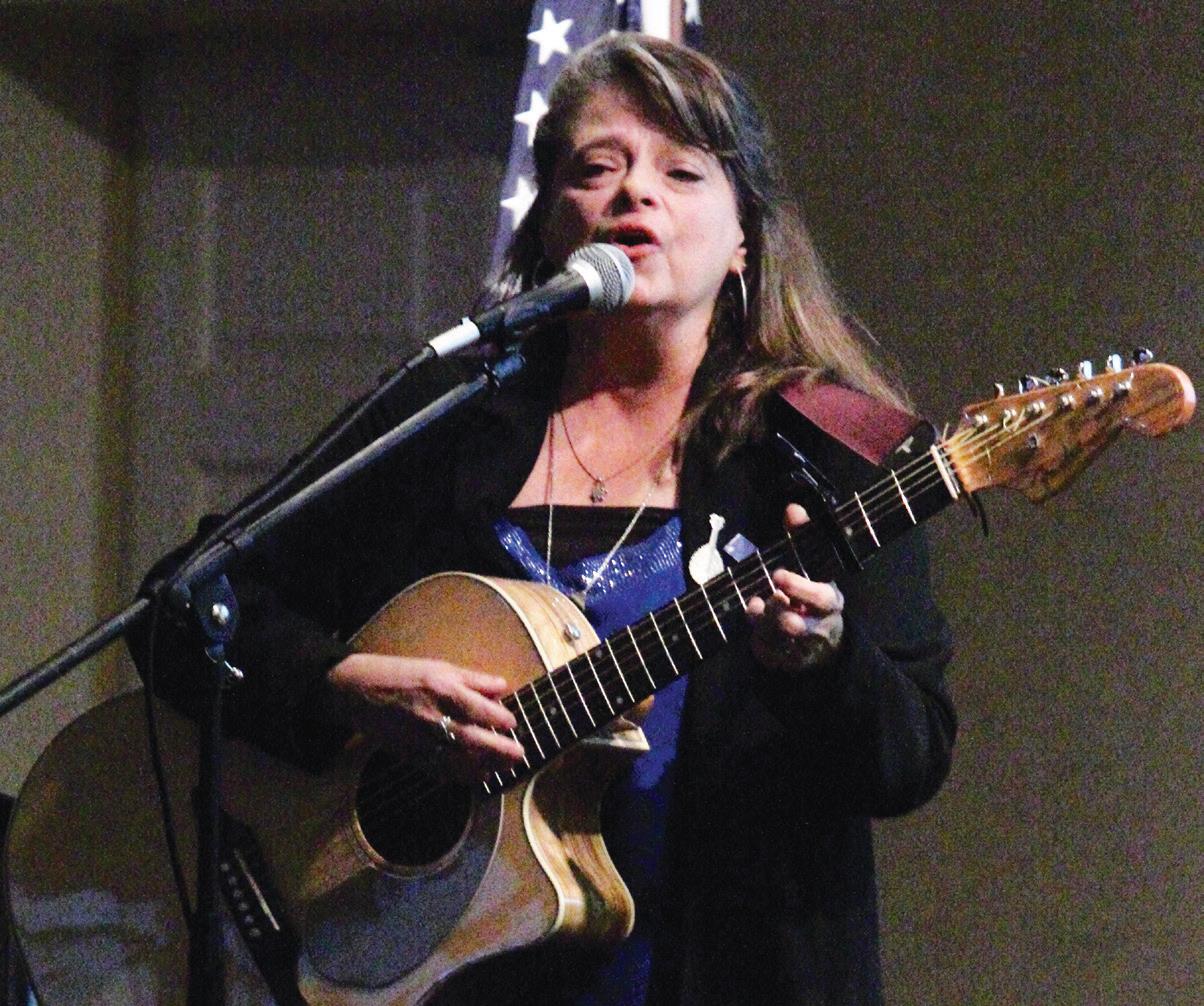

person in the region — Jewish, Muslim, and Christian — could live not in fear, not afraid of harm of the other. Victory would mean that each party to this long conflict would drop their delusional view that their adversaries will someday disappear.
"Victory first. That kind of victory is
a blessing for all sides of the conflict, and it comes from strength. And then, peace will follow."
A false peace, Chessin added, would be a recipe for continued suffering and conflict.
"This war is horrible. Every war is horrible. Today’s suffering is immense. But that’s the reason we should be more determined than even a year ago."
— Marshall Weiss


2305 Far Hills Avenue, Suite 206 | Oakwood, OH | 45419

Though he insists he was taken out of context,
By Marshall Weiss, The Observer
A day after JTA distributed the news
story,
The only rabbi in Springfield, Ohio, says local Haitian migrants lack ‘Western civilized values,’ the rabbi, Cary Kozberg, issued a statement that he took “responsibility for the pain I have caused and deeply regret it.”
In the Sept. 19 article by Andrew Lapin, Kozberg, the part-time rabbi for Springfield’s Temple Sholom, was quoted as saying about Springfield’s Haitian community:
• “This is about a culture clash. We, as the citizens of Springfield, are being disenfranchised.” When asked to clarify which communities he believed have been disenfranchised, Kozberg said, “White, Anglo-Saxon Protestant” people.
• “Haiti is not known for its, shall we say, adherence to Western civilized values.”
• “When Jews came here, they wanted to assimilate, they wanted to be good Americans. In fact, they jettisoned a lot of their own Jewish background to become good Americans. That’s not necessarily the case with these folks, and that’s where a lot of the frustration is.”
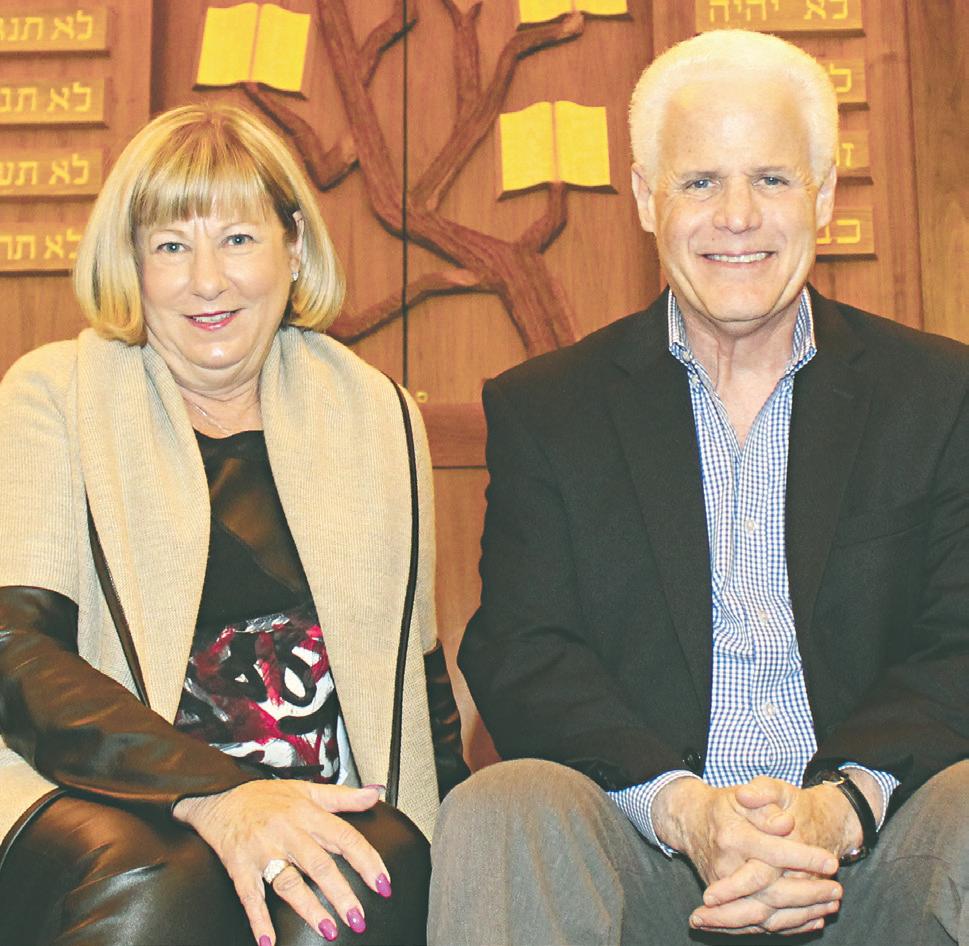
• “Tzedakah (giving) is about concentric circles. If other people are helping the Haitians, God bless. I’m not saying they shouldn’t be helped. But I think there needs to be a focus on the folks that have been disenfranchised by what’s going on.”
• He claimed some of his congregants had been forced to move from their apartments because “the Haitians were trashing the complex.”
• “Another congregant was injured in a car accident because Haitians don’t drive the way we drive here in this country.”
In Kozberg’s statement of apology, which he read to The Observer via phone on Sept. 20, he said, “As a part-time rabbi living an hour from Springfield (in Columbus), I was not well-informed on the situation with the Haitian immigrants. Since the interview, I have learned
much more about the immigration situation in Springfield. My opinions have definitely been modified.”
Also on the phone with Kozberg at Temple Sholom in Springfield was the congregation’s president, Laurie Leventhal, who issued her own statement on behalf of Temple Sholom.
“Our members embrace the Jewish teachings of welcoming the stranger and we practice social justice or tikun olam,” her statement read. “We were quite saddened to read Rabbi Kozberg’s interview in the JTA. He was not speaking for the congregation when he was interviewed. He tried to clarify certain points, and we appreciate that he has done more research since the interview. He has come to a better understanding of the situation here in Springfield.”
Leventhal said Temple Sholom supports its
Continued on Page Four
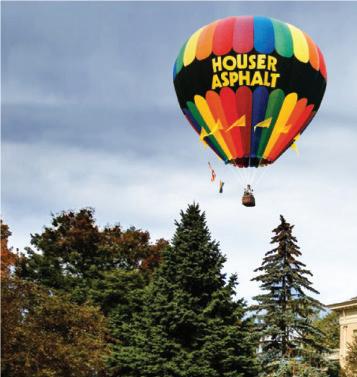
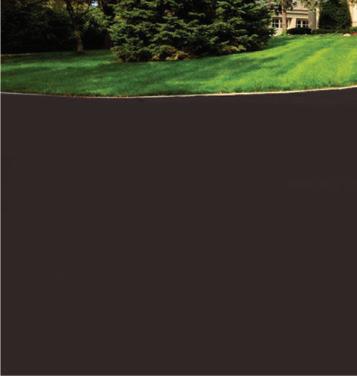























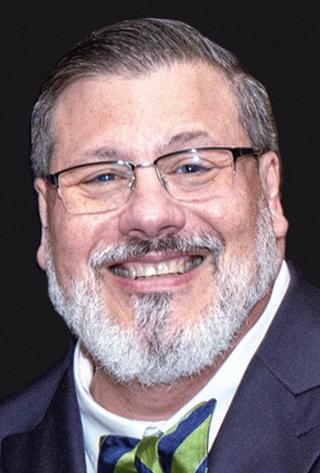
I don't remember a year when we've ever had more perfect weather for Sukkot. Every day has been sunny and mild. Every evening has been brisk but not frigid. Few bees showed up.
For us, this has meant seven nights to gather as a family, with friends old and new, for cozy harvest meals in our sukkah. It's brought a week of much sharing and listening, a bounty of laughter and happiness — even with the ugliness of hatred in the world and the fears that come with it.




































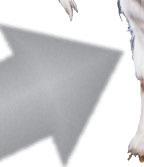


I needed this reminder to cherish the sweetness of Judaism. To cherish how it helps heal us, helps us put the broken pieces back together. This is a precious gift we can give ourselves. A precious gift we can give to the Jewish children in our community. It is this sweetness that will carry Jewish life forward to the next generation and beyond.
When we heal ourselves, our families, and our friends, we may be better able to help heal our community. And the world.





Continued from Page Three
rabbi. “We stand with him as a person. He represents the Jewish community here, but not with that article. We are here because of him, because of our rabbi. He’s made us stronger.”
‘People make mistakes’
Kozberg told The Observer it wasn’t his intention to make racist statements. “I misspoke,” he said. “I don’t believe all Haitians are bad. Most people don’t know me as a racist. People make mistakes. And I made a mistake. I should have been more clear in terms of how I expressed my understanding of the situation.”
The rabbi added he did not expect the JTA interview to be “so politicized.”
“I should have shut the interview down,” he said. “That was another mistake.”
When asked how JTA’s Andrew Lapin politicized the interview, Kozberg said the reporter wanted a specific response about Republican presidential candidate/former President Donald Trump’s comments.
“He obviously did research about my political views and things I had written, and injected those into the interview,” Kozberg said. “I did not want to go there. But unfortunately, I was too wrapped up in what was being said and trying to clarify that I obviously misspoke, and he ran with it the way he needed to.”
services, adaptive technology, and more. Learn more at DaytonMetroLibrary.org or by calling the Ask Me Desk at 937.463.2665.
during our interview — that Trump and Vance were very much a part of this story.”
Lapin added that Kozberg expressed a strong interest in talking to him about how he viewed the presence of the Haitian community in Springfield.
Kozberg told The Observer he could understand why people who read his JTA interview would think what he said was racist. He also confirmed that he was not misquoted.
But the rabbi insisted his words were taken out of context.
“He has been a very open Trump supporter,” Lapin said of Kozberg. “And so that seemed relevant to talk about. And so, yes, this was a political story, but I do not believe that I politicized it. As a journalist, it was my job to inquire about the political elements of this very political story.”
‘Are we going to ruin a person’s life because of this? No.’
Leventhal, the congregation’s president, said she doesn’t agree with what Kozberg said in the JTA article.
“I live here,” she said. “He didn’t understand that, really about the Haitian community. If you don’t live here, and you’re only coming in for an hour to do services, and you’re doing a class on Zoom, maybe he should have been a little bit more aware of it before he spoke. Mistakes happen. People make mistakes. Are we going to ruin a person’s life because of this? No.”

Lapin is JTA’s senior reporter. He told The Observer that after several days of seeing Springfield in the headlines “for Trump and Vance spreading the lies about Haitian migrants, it was clear that a Jewish angle was starting to emerge.”
National Jewish groups began to speak out on behalf of the Haitian community in Springfield, specifically citing Jewish texts and the history of American attitudes toward Jews, Lapin said.
“There are many Jewish leaders who feel there was a parallel in how Trump and Vance were talking about the Haitians in Springfield,” Lapin said. “This story really just started with my editor and I saying, ‘I wonder what the Jews who are in Springfield — who are the most proximate to the community everybody is talking about — are thinking about and responding to these challenges?'”
Lapin said the obvious person to interview was Kozberg because he is the only rabbi serving the only Jewish congregation in Springfield. When he reached out to Kozberg, Lapin said, the rabbi agreed to be interviewed.
“He understood that we were on the record, and he understood very well — because we talked about it

Because of incidents and the legitimate, continuing threat of hate groups doxing Springfield residents via social media, The Observer agreed to interview members of Temple Sholom for this story without using their names.
Doxing is to publicly publish private information about someone, especially as a punishment or revenge.
All four congregants The Observer interviewed agreed they had never heard the rabbi say anything racist or write anything racist in his role as the congregation’s rabbi.
They also agreed that the rabbi always had guardrails for his role within the congregation against talking or writing about politics.
They knew that beyond the congregation, the rabbi had expressed his staunch support online for current Republican policies and that he supports Donald Trump for president.
And although Temple Sholom identifies as a Reform Jewish congregation and is a founding member of the Union for Reform Judaism, congregants are aware of Kozberg’s disdain for the Reform movement.
“A few years ago, it became apparent that Reform Judaism — through the efforts of its rabbinic and layleaders — was moving away from these core Jewish beliefs,” Kozberg wrote two years ago in a White Rose Magazine essay, The Reform Movement Left
937-610-1555
Contributors
Rabbi Leibel Agar, Talia Doninger, Candace R. Kwiatek
Advertising Sales Executive Patty Caruso, plhc69@gmail.com
Administrative Assistant Samantha Daniel, sdaniel@jfgd.net 937-610-1555
Billing Sheila Myers, smyers@jfgd.net 937-610-1555
Proofreaders
The Dayton Jewish Observer, Vol. 29, No. 2. The Dayton Jewish Observer is published monthly by the Jewish Federation of Greater Dayton, a nonprofit corporation, 525 Versailles Dr., Dayton, OH 45459.
Views expressed by columnists, in readers’ letters, and in opinion pieces do not necessarily reflect the opinion of staff or layleaders of The Dayton Jewish Observer or the Jewish Federation of Greater Dayton. Acceptance of advertising neither endorses advertisers nor guarantees kashrut.
The Dayton Jewish Observer Mission Statement To support, strengthen and champion the Dayton Jewish community by providing a forum and resource for Jewish community interests.
Goals
• To encourage affiliation, involvement and communication.
• To provide announcements, news, opinions and analysis of local, national and international activities and issues affecting Jews and the Jewish community.
• To build community across institutional, organizational and denominational lines.
• To advance causes important to the strength of our Jewish community including support of Federation agencies, its annual campaign, synagogue affiliation, Jewish education and participation in Jewish and general community affairs.
• To provide an historic record of Dayton Jewish life.

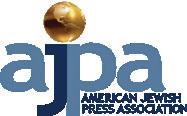


Me. “Reform Judaism is embracing the values and teachings of political progressivism, while moving away from Jewish values and teachings derived from Jewish texts.”
Congregants on the apology
Of the Temple Sholom members The Observer interviewed for this story, two believed Kozberg’s apology was genuine. The other two hoped it was.

“It’s kind of a hard pill to swallow, because while I’m a firm believer in restorative justice, I also think that there are severe repercussions that can happen to our congregants,” one member said.
“No matter what we say in the congregation, we may forgive, and that’s an especially wonderful thing, especially in the season of teshuva (return), but we need to remember that somebody from the outside is going to look at that and think, this is what Jews think. And whether that’s right or wrong — and I believe it’s wrong — they’re going to assume we all hold that view and it’s going to make us a target.”
To this Temple Sholom member, Kozberg’s words in the JTA article were racist. “To call another group of people uncivilized and unassimilated is incredibly racist. It’s something that was used to describe Jews at one time and it’s just uncalled for and should not be used.”
Another congregant was angry at the rabbi after reading the article. “The Haitian community is such a vulnerable community right now. And their vulnerability makes us all vulnerable because the attention on the Haitians has brought in Blood Tribe members. We are a nation of immigrants. And Springfield is just so emblematic of our larger nation. The other part that gets me is that I’m not indigenous to the Americas. So much of my own personal history is tied up with immigration. If my greatgrandmother didn’t immigrate, she would have died with her brother in Auschwitz.
“And I don’t personally feel disenfranchised. I have Haitian neighbors. They’ve been wonderful. I don’t feel the disenfranchisement the rabbi says I’m feeling. He can absolutely express that he has heard from his congregants that one has had to move, that another got into an accident, but to say that
‘we’ experienced this, and my congregants as a whole experience this is a gross overstep.”
This congregant was glad to hear that the rabbi “hopefully genuinely feels like he made a mistake for the words that he says.”
How much of that is heartfelt, that person added, remains to be seen. “I hope it’s a genuine sentiment from him and not something just to try and kind of pray it away.”
‘A lifetime view'
A third congregant said several Temple Sholom members have had a relationship with Kozberg since 1977.
“We were his first congregation. And then, luckily, he came back to be our part-time rabbi, which has kept our congregation going.”
This congregant also viewed what Kozberg said in the JTA piece as racist.
“Many of us were horrified with the interview. But we have a lifetime view of Rabbi Kozberg: what he’s done, how he handles himself in the community. I’m not a believer in throwing Rabbi Kozberg under the bus for one interview. I’m not happy about it, but the survival of our temple is critical, and Rabbi Kozberg plays a critical role in that.”
A fourth congregant emphasized that Temple Sholom doesn’t do litmus tests on peoples’ politics. “But the problem here is that the mistake that I think Cary made and I think that you’re trying to do, you’re still trying to couple two things that are separate. Somebody talking to Cary Kozberg in Columbus in his car about political issues is not the same as Cary Kozberg representing the Springfield congregation.”
This congregant told The Observer that “all of us felt deeply disappointed and hurt by some of the things that we read in that article. Absolutely disappointed. Hurt. Shocked. And I will tell you that our rabbi also feels deeply disap-
pointed and hurt by things that were in that article: things he said that he didn’t think before he said them. He didn’t do the research before he said them. He has owned up to that. He made a mistake, and we were really disappointed that his mistake pulled us into something that we didn’t want to be in on.
“My rabbi is just shaken to the core with this mistake he’s done.
And we are not giving him a pass. He has asked lots of questions and learned lots of stuff about what’s going on in Springfield, and he has changed his views. And that is how human beings grow. And that is what we are about. And I hope that you will not go on a witchhunt and take a situation in a city that is so hurting and make it worse.”
‘We are small, but we are diverse.’



Another aspect of Kozberg’s rabbinate this congregant noted is that he has made the temple welcoming to everyone.
“We have people who have come here for education. We have people who have come here for conversion and have converted. We have community groups, different congregations that have come here, who want to come sit in one of our services. We have had people here who are Black, who are Hispanic, who are Muslim, who are Hindu.
“We are small, but we are diverse. And it’s because he welcomes people, and he tries to explain Judaism. He’s been offering weekly online classes to people who are crazily diverse, people who I probably wouldn’t say hi to in the grocery store because we’ve had historical issues, you know, about something. But we sit together in these classes. He brings people together.”
For his part, Kozberg said he’s doing teshuva. “I’m planning to meet with some of the Haitian leaders. I’m going to be speaking about forgiveness, admission of guilt, on Yom Kippur.”
Kozberg told The Observer Oct. 15 that he had met with Viles Dorsainvil, executive director of Springfield's Haitian Community Health and Support Center, and that they talked about working together.
The writer of this article was interviewed by Andrew Lapin for JTA’s article about Kozberg.



Contact Patty Caruso at plhc69@gmail.com to advertise
Rabbi Cary Kozberg’s Sept. 19 interview for a JTA story in which he disparaged Haitians in Springfield was condemned by Rabbi Jonah Pesner, director of the Religious Action Center of Reform Judaism.
“The lies being spread about the Haitian migrant community in the U.S. are not only absurd, but deeply dangerous. Political leaders, community leaders, and faith leaders – including rabbis – have an obligation to push back,” Pesner said in a statement to JTA. “As Jews, we are all too familiar with the danger of spreading conspiracy theories about minority groups. We condemn it and urge others to do the same.”


Jews should “demonstrate support for immigrants because we were once in their position. We should naturally be expressing solidarity. Especially because they’re being maligned on the basis of a lie.”
Following Kozberg's comments, other Jewish groups issued statements supporting Springfield’s Haitians and condemning the “demonization” of the group without naming Kozberg directly, including the American Jewish Committee and 56 members of Jewish clergy across Ohio, who published an unsigned letter with HIAS.
'We come together to stand against xenophobia and for immigrant communities.'
Mark Hetfield, CEO of the Jewish refugee aid group HIAS, made a similar argument before Kozberg's interview. He said the anti-Haitian invective was “a new brand of blood libel.” HIAS issued a joint statement with the Jewish Council for Public Affairs, a progressive group, and two other groups denouncing rumors about Haitians.
“It is ironic that this libel against Haitian immigrants coincides with the 100th anniversary of the Johnson-Reed Act, where Congress legislated drastic immigration quotas largely motivated by antisemitism and a belief that Jewish immigrants were unassimilable,” Hetfield told JTA, referring to the 1924 legislation that all but ended Jewish immigration from Eastern Europe.
Hetfield, who said he worried that Haitians could be the target of a violent attack, added that

“As Jewish clergy in Ohio, we stand in solidarity with the Haitian community in our state who have been slandered in ways that impact their safety and the safety of our shared communities,” the letter said.
"Jewish tradition has long understood the direct line between speech and violence, placing lashon hora — evil speech — among the most grievous of sins for the life-threatening harm it can unleash. For these reasons, we come together to stand against xenophobia and for immigrant communities. We demand our political leaders do the same.”
Viles Dorsainvil, a local Haitian community leader in Springfield and the executive director of the Haitian Community Health and Support Center, said he was glad to receive a letter of support from the Jewish Federation of Greater
















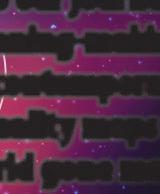




































4 Thursdays, 7 PM in person/Zoom beginning Oct. 31. $48 members/$64 non-members. Book included. Preregistration required.





and Liberia. On Jan. 8, 1922, Young died in Lagos, Nigeria on special assignment as the military attaché to Liberia.



Dayton, which it sent to him Sept. 19, the same day JTA published Kozberg’s interview.
In the letter, Jewish Federation CEO Cathy Gardner, Jewish Community Relations Council Director Jeff Blumer, and JCRC Chair Bonnie Beaman Rice introduced themselves as “your Jewish neighbors to the west” and added, “It is a core tenet of our faith to ‘welcome the stranger.’ We, along with so many others of different faiths and cultures, whose ancestors made this journey before you over the decades, support your quest, and welcome you. We are sending all our virtual thoughts of goodwill your way, including our prayers for your safety.”
The letter was touching, Dorsainvil said. “We’re so happy that the Jewish community in Dayton reached out to us,” he said, adding that he, too, saw similarities between what Jewish immigrants to the United States experienced in the past and what Haitian migrants are currently experiencing.
“When you first get to a place, you are just being denigrated,” he said. “Not only the Jewish, but other communities as well, went through the same thing.”
Dan Sweeny, president of the Jewish Federation of Greater Dayton, and three rabbis from the Dayton area also issued statements after Kozberg's interview with JTA.
"The Jewish Federation of Greater Dayton offers our support to all the residents of Springfield, including those who have more recently come to this country for the prom-
ise of opportunity," Sweeny's statement said. "We stand with you and extend our thoughts and prayers for your safety and your right to live peacefully."
Beth Abraham Synagogue's Rabbi Aubrey Glazer emphasized a lesson from Rabbi Judah Loew of Prague. "If words create and destroy worlds, then verbal oppression (ona'ah) is more severe and irreversible than monetary oppression, as it reflects a lack of reverence for the divine. If God created humanity in the divine imprint, then every creature deserves dignity and respect (kavod). If God created the world from a blueprint of compassion, then our interaction within the fabric of society holds the potential for holiness that is revealed and redeemed through our words that lead to acts of lovingkindness."
Rabbi Judy Chessin of Temple Beth Or cited the command in Deut. 10:19, "Love the stranger, for you were strangers in the land of Egypt," to remind Jews that compassion and justice are stronger than the forces dividing members of the Jewish community.
"In a time when social media and political rhetoric seek to drive us apart, the debate around immigration, especially in places like Springfield, Ohio, can feel polarizing. Jewish voices from both the right and left offer solid and thoughtful opinions, yet we can find unity through the shared teachings of Hebrew scripture."
Rabbi Karen Bodney-Halasz of Temple Israel noted she was "profoundly disturbed" by Kozberg's comments about the
Haitian community in Springfield.
"Generalizing or devaluing others based on their culture or origins contradicts core Jewish values. Our tradition teaches us to treat all people with dignity and respond with empathy and understanding, no matter their background or circumstances. We are called to uphold principles of compassion, justice, and the welcoming of strangers."
Bodney-Halasz was among the interfaith clergy to deliver prayers at a vigil in support of Haitian migrants on Sunday, Sept. 22 at Greater Grace Temple in Springfield.
Hate groups empowered
The Dayton Daily News reported Oct. 1 that the Ku Klux Klan, Blood Tribe, and Proud Boys were "routinely visiting Springfield, marching through city streets or distributing recruitment flyers and raising fear of intimidation and violence."
The article included reports that neo-Nazi Blood Tribe members stood in front of the home of Springfield's mayor, Rob Rue, and waved swastika flags there; people held a banner outside Springfield City Hall that read, "Haitians Have No Home Here" in English and Haitian Creole; a group associated with the KKK in Kentucky has distributed hate flyers in neighborhoods across Springfield; and that people who have identified themselves as members of the Proud Boys hate group have harassed local residents.
— Andrew Lapin, JTA and Marshall Weiss, The Observer













Aleksandar Svager, who along with his wife, the late Thyrsa Svager, funded numerous college scholarships for African American women to complete their degrees in mathematics, died Oct. 3 at Brookdale Oakwood. He was 93.
"He always thought about helping people in my sister's culture because education was quite important to the man," Thyrsa Svager's sister, Constance Robinson, told The Observer
"He was always about educating people in math and science. He really wanted people to excel."
At age 10 in 1941, Svager and his parents fled their home in Sarajevo, Yugoslavia hours before the Nazis were to arrest and transport them to Auschwitz, Robinson said.
"They got as far as Italy before they were taken to a prison camp. I'm not sure which one it was."
Robinson said her late brother-in-law rarely talked about his story of survival when he married into her family. To her knowledge, he never wrote about his Holocaust experiences or recorded them for an oral history.
She shared as much as she knew.
"When they were escaping,
he didn't talk for about three months. When they got to the prison camp, he didn't talk. Because he was told to be quiet."
Svager managed to roam the streets around the prison camp in Italy and became a money changer for the shopkeepers in the surrounding town.
He obtained food to sustain his family from sympathetic townspeople and on the black market. "And the shopkeepers liked him because they didn't think that the police would come after him since he was a boy," Robinson said. "It was bad, but it could have been much worse."
When World War II ended, the Svager family returned to Yugoslavia. Aleksandar Svager studied and taught at the Nuclear Institute of Zagreb and the University of Sarajevo.
He obtained a student visa in 1960 to study in the United States and left the Communist country for Texas Christian University in Fort Worth, where he earned his master's degree in physics.
Robinson said.
He arrived at Central State University — the public historically Black land-grant university in Wilberforce — in 1964 as a professor of physics. Within a year, he chaired CSU's first Computer Science Department.
It was at CSU where he met his future wife, Prof. of Mathematics Thyrsa Frazier. According to the American Physics Society, she was the 10th African American woman to receive a Ph.D. in math.

On CSU's commencement day in 1968, they were married at her parents' home in Wilberforce.
The couple lived on one paycheck. They saved the other to fund scholarships.
"After that, he got a master's of art so he could get a teaching job and prolong his educational stint without putting his relatives (in Yugoslavia) in danger,"
Although interracial marriage had been legal in Ohio since 1887 — when the state's "anti-miscegenation" law of 1861 was repealed — it didn't become legal across the United States until June 12, 1967, when the Supreme Court ruled in favor of Mildred and Richard Loving in Loving v. Virginia.
"They were a good match for each other," Robinson said of Thyrsa and Aleksandar Svager.
department, it was a lot better than it could have been."
The Svagers decided they wanted to help female African American students pursue and obtain mathematics degrees.
The couple lived on one paycheck. They saved the other to fund scholarships.
"They never had children," Robinson said. For three decades, they helped students they knew who were in need.
"Whenever a kid needed money, we gave it and we never said it was a gift or a loan," Aleksandar Svager told the Springfield News-Sun in a 2017 interview.
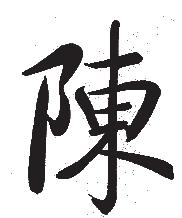


through The Dayton Foundation's African American Community Fund. To date, the fund has awarded scholarships totaling $101,000 to 28 students.
"I wanted a way to remember my wife," he told the Springfield News-Sun "Since she and I had always helped students, I needed to create a scholarship fund."
Robinson said Aleksandar Svager wasn't religious until after his wife died.
"They did have a menorah in their window, but he also gave each of the nieces and nephews (his wife's family) a crisp $100 bill for Christmas, even after they graduated from college. He was generous."
Temple Israel Rabbi Emeritus David Sofian met Svager in 2004 when he came to the Dayton congregation to talk about burying his mother.
"I distinctly remember merely asking him to tell me about her," Sofian said. "His answer was long and detailed, giving me everything I needed to proceed with the funeral. He used to tell me I got him to talk more about himself and his family that day than anyone else ever had. We became friendly after that."

"Since Wilberforce is predominantly African American, they were much more accepting of my brother-in-law, and since he was on the faculty and chairperson of the physics department, and she was the chairperson of the mathematics

Thyrsa Svager retired from CSU as provost and vice president for academic affairs in 1993. Aleksandar Svager retired in 1996.
After his wife's death in 1999, he established the Thyrsa Frazier Svager Scholarship Fund

The rabbi said Svager joined the temple and attended its Torah study class almost every Shabbat morning, "contributing interesting comments, mostly stemming from his background, which everyone in the group enjoyed."
Sofian said Svager was often the first one to arrive for Torah study. "He liked to laugh, and I was happy to see him each Shabbat morning. Indeed, he was such a regular, if he wasn't there, we worried that maybe something happened."
Svager was the lead donor when the temple commissioned a new Torah scroll in 2007. It was at about that time when Svager began sharing his story with students and community groups in Xenia.
He lit one of the six memorial candles at the 2018 Greater Dayton Yom Hashoah Observance, held at Beth Jacob Congregation.
One middle school student who heard his testimony at school wrote," Dr. Svager's story is one that I'll remember for the rest of my life."
— Marshall Weiss
The Dayton region's Jewish day school, Hillel Academy, will host One Enchanting Evening, 7:30 p.m., Saturday, Nov. 16 at the PNC Arts Annex, 46 W. Second St., Dayton. The fundraiser will feature the Hauer Swing Band, a gaming parlor, kosher hors d'oeuvres and desserts, cocktails and mocktails. The cost is $95 per person, $180 per couple and includes free parking at the Arts Garage, 121 W. Second St. RSVP by Nov. 8 at daytonhillel.org.
Temple Beth Or will honor veterans in the Dayton area with an awareness session about Post-Traumatic Stress Disorder led by psychiatrist Dr. Steve Taylor, 9:30 a.m. to noon, Sunday, Nov. 10.
Taylor, who has extensive experience treating PTSD, will talk about causes, symptoms, treatments, and resources available for veterans and their families.
Gary Zola, executive director emeritus of the Jacob Rader Marcus Center of the American Jewish Archives in Cincinnati, will present the talk, Ballot Box Priorities: Do Jews Consider Themselves Jewish Americans or American Jews When They Vote? as part of Temple Israel's Ryterband Lecture Series, 9:45 a.m., Sunday, Nov. 24. Zola is the Ackerman Family Distinguished Professor of the American Jewish Experience and Reform Jewish History at
Hebrew Union College-Jewish Institute of Religion.
The Temple Israel Brotherhood sponsors the Ryterband Series, which also includes brunch. Beth Abraham Synagogue Men's Club's Rick Pinsky Brunch Speaker Series is partnering for this program. The cost is $7.

Gary Zola
Temple Israel is located at 130 Riverside Dr., Dayton. For more information, go to tidayton.org or call 937-496-0050.
The Synagogue Forum of Greater Dayton presents its 14-session Introduction to Judaism course on Tuesdays from 7 to 8:30 p.m. beginning Nov. 12 and running through March 4.
The annual class is open to anyone interested in Jewish learning, dialogue, and exploration. A hybrid course, some sessions are held at local synagogues, some via Zoom, with all sessions available online.
The course offers an indepth look at Judaism from

Conservative, Orthodox, Traditional, and Reform perspectives. Instructors are rabbis from Dayton’s synagogues. Topics include God and theology, sacred texts, peoplehood, Zionism, Jewish history, personal observance, life cycles, Shabbat, community, holidays, prayer and liturgy, antisemitism and the Holocaust. Registration is $36 for an individual or couple. For more information or to enroll, email Rabbi Judy Chessin at rabbichessin@templebethor.com.
The free event is open to the public and will include refreshments and raffle prizes. Temple Beth Or is located at 5725 Marshall Rd., Washington Township. Register at templebethor. com/adult-education. The University of Dayton will hold its annual Kristallnacht Remembrance, 5 p.m., Wednesday, Nov. 6 at the Immaculate Conception Chapel. Kristallnacht, the Night of Broken Glass — Nov. 9 and 10, 1938 in Nazi Germany — is considered the start of the Holocaust. Assistant Prof. Ryu-Kung Kim will conduct UD’s World Music Choir. The observance will also be livestreamed. For more information, contact UD Executive Director of Campus Ministry Crystal Sullivan at csullivan1@udayton.edu.
The International Association of Jewish Genealogy Societies will host its annual conference in Fort Wayne, Ind., Aug. 10-14, 2025 — only a 2-hour, 15-minute drive from Dayton. Fort Wayne is known for its exceptional genealogical resources through the Allen County Public Library Genealogy Center.
IAJGS will host a virtual information/Q&A session at 2 p.m., Sunday, Nov. 10 about the 2025 conference.
Miami Valley Jewish Genealogy & History, a project of the Jewish Federation of Greater Dayton, is a member of IAJGS. Marshall Weiss is Miami Valley JG&H's project director.
To register for the Nov. 10 virtual program and for conference details, go to iajgs2025.org or contact Weiss at mweiss@ jfgd.net.








Working together to bene t our community, Jewish Cemeteries of Greater Dayton was formed to preserve the dignity of our three Jewish cemeteries in perpetuity. But consolidating the administration and operations of these properties is more than a good business strategy. It’s the ultimate act of tzedakah.
at’s why we created an endowment organization to maintain the sanctity, integrity, and perpetuity of Beth Abraham, Beth Jacob, and Temple Israel cemeteries.
Judaism teaches us that honoring, respecting, and caring for a person who has died is one of our greatest mitzvot.
Visiting a cemetery expresses respect for the departed, reinforces our connections with them, and shows that their memory has not been forgotten.
Join us in this sacred e ort to preserve the eternal homes of the generations that came before us, care for our hometown Jewish community, and look out for future generations who will need our care.
Story and Photos by Talia Doninger Special To The Observer
Local Native Americans visited children with Beth Abraham Synagogue's religious school Oct. 13 to share the art of their traditional storytelling.
The Conservative congregation's new religious school director, Elyssa Wortzman, organized the program to explore how Native Americans and Jews use stories to connect generations and preserve histories.
“Storytelling is essential to the identity of both cultures,” Wortzman said. “This program allows our students to learn that while our traditions may be different, the purpose behind our stories — teaching, connecting, and preserving values — is the same.”
Yavonne McGarry, a member of the Athabascan people, shared a story her grandmother first told her as a child in Alaska: The Beaver and the Porcupine.
“Animals are considered our relatives,” McGarry said. “Just like us, they have their own stories, and through them, we learn how to live in harmony with the earth.”
One student asked why animals were prominent in Native American stories; this prompted a discussion about symbolism and spirituality.
Another student said, “Animals are almost like their own medium of storytelling.”
Wortzman shared the story of Noah’s ark in Genesis, which draws on animals, the environment, and spirituality to convey lessons of kindness, sacrifice, and a connection to nature.
“Our stories may sound different, but they reflect universal human experiences: of struggle, resilience, and hope,” Wortzman said. “We’re teaching them that storytelling connects us not only to our past but also to one another.”
The session also provided hands-on experiences. After each speaker shared a story, students were encouraged to draw their emotional responses, to engage in a creative form of midrash, of creating their own values-based stories.

It’s the understanding that everything is connected.”
Guy Jones, a member of the Hunkpapa band of the Lakota people of the Standing Rock Sioux Tribe, and a founder of the Miami Valley Council for Native Americans, shared that he moved here nearly 40 years ago.
"What drew me to Dayton was the four rivers gathered, illustrating a hand. I went to the East and some of the first welcoming people I met were of Jewish faith,” Jones said.
Wortzman envisions this program as part of a broader religious school curriculum to incorporate more diverse learning experiences.
“Learning about other cultures helps deepen our appreciation for our own,” she said. “It opens our minds and enriches our traditions.”


Preserving Our Past Ensuring Our Future

Donations can be made to Jewish Cemeteries of Greater Dayton 525 Versailles Drive, Dayton, OH 45459 or scan the QR Code below to donate on our website. daytonjewishcemeteries.org
“It was an organic process. The children were able to add their own layer of meaning,” Wortzman said.
Shelly Corbin, of the Cheyenne River Sioux Tribe, introduced the concept of Wakan Tanka, the Native American term for Great Spirit or Great Mystery.
“Wakan Tanka isn’t just one entity,” Corbin explained. “It’s the spirit that moves through all of creation — plants, animals, humans, and even the wind.

Although Native American and Jewish storytelling share common themes, the methods they employ are different. Native American stories are typically presented orally and may involve visual symbols like sand paintings, totems, and even yarn to help illustrate the narratives. Jewish storytelling frequently draws on written texts from the Torah and the Talmud, though the Talmud was originally transmitted orally.

“Native American tales may evolve with each telling, with the adaptation of the storyteller's voice and the needs of the audience, compared to Jewish stories that retain a fixed form to preserve religious teachings,” Wortzman said.
Both traditions emphasize the importance of passing down stories to sustain cultural identity and moral values across generations.
“We are energy and speak our stories into existence. Storytelling creates emotion and memory, allowing us to connect with one another on a profound level,” Corbin said.
“In sharing our traditions, we not only preserve our past but also build bridges between our cultures, enriching the lives of everyone involved.”
Who do you call when you need volunteers to help clean headstones at a cemetery that dates to 1875? In Beth Jacob Congregation's case, they called on the Air Force Junior ROTC at Tecumseh High School in New Carlisle. Nine cadets teamed up with seven members of the synagogue on Sept. 15 to carefully clean more than 100 stones in the cemetery's oldest section.
"It's buckets and toothbrushes and regular scrub brushes and water," said Air Force Chief Master Sgt. Dennis Orcutt, Tecumseh High School's AFJROTC instructor. Orcutt is also a Beth Jacob member.

Tecumseh ROTC's Kitty Hawk Air Society, the honor society for cadets, already volunteers each year to clean veterans' headstones and markers at Medway Cemetery.
For the Beth Jacob Cemetery project, Orcutt recruited volunteers from among all his cadets.
Synagogue board secretary Helen Halcomb said the headstone project came about when members first went out to clean the cemetery grounds.
"We got all the limbs off the tombstones, and then you could really see how bad it was," she said. "People who have family here, most of them take care of their
Before a Shabbat service, Orcutt heard Rabbi Leibel Agar talk about the need for volunteers to clean the headstones. That's when he suggested his cadets help with the job.
Cadet Dylan Williams, a senior, said the rabbi explained the meaning of the Jewish symbols on the headstones as they cleaned. He also translated the Hebrew for the cadets.
"It was kind of neat," Orcutt said, "when the rabbi explained the mitzvah (commandment) of doing this."

In Judaism, kavod hamet, honoring the dead, is considered one of the highest mitzvot (commandments), a selfless act of chesed (lovingkindness) with no possibility of reciprocity.
According to the synagogue, there are 1,307 confirmed burials at its cemetery. The earliest documented burial was a 9-year-old boy, C. Frank, in 1880.
"Another thing we learned was there are a lot of rocks on top of the gravestones, symbolizing that people came over and visited," Williams said.
"It was mind-blowing when we saw all those rocks on old gravestones, just to realize that some people actually do care. Even if they've never met the person
— their great-grandfather — they still wanted to come over and show their respect. That made me more motivated to clean that gravestone."
Though the volunteers didn't repair any broken headstones, Orcutt said they put some back that were off their bases.
"And there was at least one that was broken, and it was off to the side. We picked it up and put it all right there where it was together, at least."
Halcomb said the volunteers who went out there got out of it more than they gave. "The difference of before and after is impressive. It's a great mitzvah."

Orcutt said he'll offer the project up to his cadets again in the spring. — Marshall Weiss


Join us for an enchanting evening featuring the Hauer Swing Band. Immerse yourself in our elegant gaming parlor, savor delectable kosher hors d’oeuvres and desserts, and delight in our expertly cra ed cocktails and mocktails. Experience an unforgettable night where glamour and generosity unite to support Hillel Academy of Greater Dayton.
By Kirsten Beard Cleveland Jewish News
More than 10,000 antisemitic incidents in the United States were reported in the year since the Oct. 7, 2023 Hamas massacre, according to the Anti-Defamation League’s preliminary data, as stated in an Oct. 7 news release. This is the highest number of incidents ever recorded in any single-year period since the ADL began data tracking in 1979.
ADL CEO Jonathan Greenblatt, said in the release that since Oct. 7, 2023, “Jewish Americans haven’t had a single moment of respite. Instead, we’ve faced a shocking number of antisemitic threats and experienced calls for more violence against Israelis and Jews everywhere.”
The newly released figures from Oct. 7, 2023 to Sept. 24, 2024 represent over a 200% increase compared to the incidents reported to the ADL during the same period a year before, which saw 3,325 incidents, the release stated.



According to the ADL Center on Extremism, which gathers reports and tracks antisemitic incident data, the more than 10,000 antisemitic incidents break down into categories including over 8,015 incidents of verbal or written harassment, over 1,840 incidents of vandalism, and over 150 incidents of physical assault.
At least 1,200 of these antisemitic incidents happened on college campuses, according to the ADL. In the same
period a year before, the ADL recorded about 200 incidents, representing a 500% increase.
More than 2,000 of the incidents occurred at Jewish institutions including synagogues and Jewish centers, where more than half of all incidents took the form of bomb threats.
There were 81 bomb threats against Jewish institutions recorded in the same period in the prior year.
The ADL’s preliminary data found that more than 3,000 of all the incidents took place during anti-Israel rallies, which featured regular explicit expressions of support for terrorist groups including Hamas, Hezbollah, the Houthis, and the Popular Front for the Liberation of Palestine — one of the most concerning antisemitic trends the ADL captured since Oct. 7, 2023.
The ADL tracks incidents of antisemitic harassment, vandalism, and assault in the United States every year, and the data is published annually in its Audit of Antisemitic Incidents.
In 2023, the ADL recorded an unprecedented total number of 8,873 antisemitic incidents, a 140% increase from the previous year.
According to the release, the ADL expects these preliminary figures to increase as it receives more incident reports from partners, law enforcement, and victims. The final antisemitic incident data for 2024 will be published in the spring of 2025.
By Luke Tress, JTA
Jews were targeted in 1,832 hate crimes in the United States last year, far more than any other religious group and a steep increase over 2022, according to FBI data released Sept. 23.
The number of anti-Jewish hate crimes last year, when Hamas’ Oct. 7 attack on Israel sparked a spike in antisemitism worldwide, represented a 63% increase over 2022, when there were 1,122 incidents reported.
Jews, who make up about 2.5% of the U.S. population, are regularly targeted more often than any other religious group, according to the FBI’s data.
In 2023, Jews were targeted in 68% of all hate crimes motivated by religion, and in 15% of the total 11,862 hate crimes tallied against all groups. That total number of incidents is an increase of about 250 from 2022.
Muslims were the second most targeted religious group, victim to a total of 236 incidents, an increase from the 205 recorded in 2022. Black Americans, who comprise around 13% of the U.S. population, were subject to 3,027 hate crimes and were the only group targeted more often than Jews.
The FBI said 16,009 agencies around the country sent in hate crimes data, covering 95.2% of the U.S. population, although not all agencies submitted data for every month of the year.
As in previous years, several large cities did not report any hate crime data, something Jewish organizations have long sought to address via legislation. For 2023, several large cities such as Orlando, Fla. and Newark, N.J. did not report any data.
There were 2,002 total offenses against Jews, including 1,000 cases of vandalism, 700 of intimidation, 112 cases of assault and 62 of aggravated assault. There were seven cases of antisemitic arson, and no antisemitic murders recorded by the FBI. There were 2,069 Jewish victims, of whom 1,136 were adults and 128 were minors.
Different groups use differing standards and methods to quantify the level of antisemitism in the United States.
The Secure Community Network, a Jewish security agency, said it had recorded more than 5,400 threats and suspicious incidents in 2023 and said the FBI’s report did “not fully reflect the scope of the threat.”
Connect with us! Check out our events. For more information, check out our calendar at jewishdayton.org
Sunday, November 10, 3 – 5PM at Topgolf 9568 Water Front Drive, West Chester, 45069
PJOW Topgolf Takeover! Kids ages 9-12 hit the driving range for a fun afternoon with their friends. We will have a special mitzvah activity to support those in need. Parents are welcome to drop off their children for this PJOW program or stay and chat!
$18 per family. RSVP by November 7.

To register, visit jewishdayton.org/events
Questions? Please contact Kate Elder at kelder@jfgd.net
SUNDAY, NOVEMBER 3, 2 - 4PM
CABS Opening Event – Larry Tye, The Jazzmen: How Duke Ellington, Louis Armstrong, and Count Basie Transformed America
SATURDAY, NOVEMBER 9, 7 - 11PM JYG Late Night @ the J
SUNDAY, NOVEMBER 10, 3 - 5PM PJ Our Way Topgolf Takeover
TUESDAY, NOVEMBER 12, 9AM - 1PM JFS Medicare Check Up Day
THURSDAY, NOVEMBER 14, 7 - 9PM
CABS Zoom Event – Thomas Harding, The Maverick: George Weidenfeld and the Golden Age of Publishing
SUNDAY, NOVEMBER 17, 10:30AM - 1PM Women's Philanthropy Brunch
TUESDAY, NOVEMBER 26, 7:30 - 10PM JCC Culture Club at the Schuster Center

Saturday, November 9, 7 – 11PM at the Boonshoft Center for Jewish Culture & Education 525 Versailles Drive, Centerville, 45459
Jr. Youth Group will take over the J for late-night fun! We will play flashlight tag, make s’mores, play games, do crafts, and eat way too much junk food. This is also a great opportunity for parents to enjoy a dinner out alone!
$10 per person. RSVP by November 1 at jewishdayton.org/events. Questions? Contact Suzzy Nandrasy at snandrasy@jfgd.net.
To purchase tickets for in person events or to register for free events, please visit jewishdayton.org/events or call 937-610-1555.



“ALL THAT JAZZ”
Sunday, November 3 at 2PM
In partnership with the University of Dayton Departments of Communication and Music and the Alumni Chair in the Humanities
Featuring a Performance by the Dayton Jazz Ensemble directed by Dr. Willie Morris III
University of Dayton Roger Glass Center for the Arts
(29 Creative Way, Dayton 45479)
Free parking in Lot S-1
Cost: $10 (No cost to students with valid student ID)
Larry Tye, The Jazzmen: How Duke Ellington, Louis Armstrong, and Count Basie Transformed America
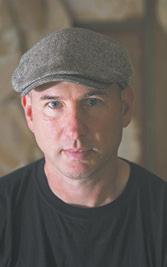





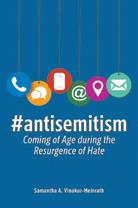


Thursday, November 14 at 7 PM via Zoom — enjoy from the comfort of your home!

No Cost
Thomas Harding, The Maverick: George Weidenfeld and the Golden Age of Publishing
Sunday, December 8 at 2PM
In partnership with Wright Memorial Public Library & Hadassah
Wright Memorial Public Library (1776 Far Hills Avenue, Oakwood 45419) No Cost
Julie Satow, When Women Ran Fifth Avenue: Glamour and Power at the Dawn of American Fashion
Tuesday, January 14, 2025 at 7 PM via Zoom — enjoy from the comfort of your home!

No Cost
Samantha Vinokor-Meinrath, #antisemitism: Coming of Age During the Resurgence of Hate

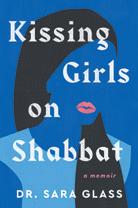




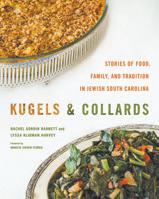



Sunday, February 2, 2025 at 2 PM
In partnership with the Greater Dayton LGBT Center & Jewish Family Services of Greater Dayton via Zoom — enjoy from the comfort of your home! No Cost

Sara Glass, Kissing Girls on Shabbat: A Memoir
Sunday, February 16, 2025 at 7 PM


In partnership with JCC Book Club via Zoom — enjoy from the comfort of your home! No Cost
Eric Z. Weintraub, South of Sepharad: The 1492 Jewish Expulsion from Spain
Sunday, March 9, 2025 at 4PM
In partnership with Beth Abraham Sisterhood
Beth Abraham Synagogue (305 Sugar Camp Circle, Oakwood, 45409) Cost: $10
FEATURING a sampling of the authors’ recipes
Rachel Gordon Barnett & Lyssa Kligman Harvey, Kugels and Collards: Stories of Food, Family, and Tradition in Jewish South Carolina
Sunday, March 30, 2025 at 7 PM via Zoom — enjoy from the comfort of your home!

No Cost
Philip Eil, Prescription for Pain: How a Once Promising Doctor Became the “Pill Mill Killer”
“EXPEDITION TO EVEREST”

Thursday, January 30, 2025 at 7 PM via Zoom — enjoy from the comfort of your home! No Cost
David S. Tatel, VISION: A Memoir of Blindness and Justice



Sunday, April 6, 2025 at 2PM
In Partnership with Washington-Centerville Public Library & Women’s Philanthropy
Woodbourne Library (6060 Far Hills Avenue, Centerville, 45459) No Cost


“ALL THAT JAZZ”
Sunday, November 3 at 2PM

In partnership with the University of Dayton Departments of Communication and Music and the Alumni Chair in the Humanities
Featuring a Performance by the Dayton Jazz Ensemble directed by Dr. Willie Morris III
University of Dayton - Roger Glass Center for the Arts
(29 Creative Way, Dayton 45479)
Free parking in Lot S-1
Cost: $10 (No cost to students with valid student ID)
Books available for purchase and book signing at event
Larry Tye, The Jazzmen: How Duke Ellington, Louis Armstrong, and Count Basie Transformed America
The Jazzmen by Larry Tye is a captivating exploration of the lives and music of some of the most influential figures in jazz history. Tye delves into the personal and professional stories of three of the most iconic jazz legends, highlighting their contributions to the genre and their impact on American culture, especially the civil rights movement and their bonds with Jewish musicians and managers. Through rich anecdotes and thorough research, Tye paints a vivid picture of the jazz scene, bringing to life the vibrant and often tumultuous world of these groundbreaking musicians. The book is a tribute to the creativity, resilience, and enduring legacy of the jazzmen who shaped the soundscape of the 20th century.

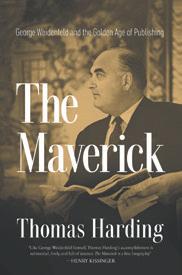



Thursday, November 14 at 7 PM via Zoom — enjoy from the comfort of your home!
No Cost
Thomas Harding, The Maverick: George Weidenfeld and the Golden Age of Publishing
George Weidenfeld was a British publisher, philanthropist, and political activist. He founded the Weidenfeld & Nicolson publishing house in 1948, which became renowned for its contributions to the literary world. Weidenfeld introduced the works of over 6,000 authors. Included among them were Vladimir Nabokov’s Lolita, Saul Bellow’s Herzog, and Mary McCarthy’s The Group. Weidenfeld was also known for his humanitarian efforts, particularly his work in helping Jewish refugees, his ardent Zionism, and his involvement in various charitable organizations.
Sunday, December 8 at 2PM

In partnership with Wright Memorial Public Library & Hadassah Wright Memorial Public Library (1776 Far Hills Avenue, Oakwood 45419)
No Cost
Books available for purchase and book signing at event
Julie Satow, When Women Ran Fifth Avenue: Glamour and Power at the Dawn of American Fashion
When Women Ran Fifth Avenue by Julie Satow explores the dynamic and transformative period of the early 20th century when women began to assert their influence on New York City’s Fifth Avenue. The book delves into the lives of pioneering women who challenged societal norms, shaped fashion, and left an indelible mark on one of the world’s most famous streets. Through rich historical detail and vivid storytelling, Satow brings to life the social, cultural, and economic impact these trailblazing women had on the heart of Manhattan.
FEDERATION of GREATER DAYTON & ITS AGENCIES
ANNUAL CAMPAIGN
In honor of Wendy Lipp receiving the JCC Volunteer of the Year Award
Jared, Blayne, and Brendon Goldwasser
JEWISH CEMETERIES FUND
In memory of Marilyn Scher
Brenda and Scott Meadow and Jeffrey Kantor
Ellen Weprin
Ellie and Bob Bernstein
Rosalyn and Sharon Mosrow
Marni Flagel
Donna Holt
JOE BETTMAN MEMORIAL TZADIK AWARD FUND
Thank you, Bettman Family, for honoring us with the Joe Bettman Award
Joan and Peter Wells
In memory of the father of Debbie Lieberman
Todd, Jean, Michael, and Jeremy Bettman

Learn ways to: Stay Informed. Stay Healthy. Save Money.
Tuesday, November 12, 9AM – 1PM Boonshoft Center for Jewish Culture and Education (525 Versailles Drive, 45459) By appointment only.
Free Medicare Check Up Day with the Ohio Senior Health Insurance Information Program (OSHIIP) in partnership with Jewish Family Services at the Boonshoft Center for Jewish Culture and Education. Schedule an appointment by calling 937-610-1555
Medicare counselors from the Ohio Department of Insurance will be on hand to sit down with you individually.
The Annual Medicare Enrollment Period is October 15 – December 7. Get tips on how to enroll for 2025 coverage in a Medicare prescription drug plan (Part D) and/or a Medicare health plan.

Calling all our crafty community members…Let’s do a KNITZVAH!
Friday, November 1 to Friday, November 29, JFS will welcome your hand-knitted, crocheted, or sewn donations of hats, scarves, lap blankets, socks, or gloves to help make our Chanukah outreach extra special (and fuzzy).
For questions or to schedule a drop-off, please contact Jacquelyn Archie at jarchie@jfgd.net or 937-610-1555.
Synagogue Forum of Greater Dayton Intro. to Judaism: Tuesdays, Nov. 12Mar. 4, 7 p.m. $36. Schedule & RSVP at jewishdayton.org/program/intro-to-judaism. For info., contact Rabbi Chessin at rabbichessin@templebethor.com.
Beth Abraham's Kabalah Curious: W. Rabbi Glazer. Thursdays, Oct. 31-Nov. 21, 7 p.m. In person & Zoom. $64 nonmembers, $48 members. Book included. Register at 937-293-9520. 305 Sugar Camp Cir., Oakwood.
Beth Jacob Classes: W. Rabbi Agar. Tuesdays, 7 p.m.: Torah Tuesdays on Zoom. Thursdays, 7 p.m.: Thursdays of Thought on Zoom. Call to register, 937-274-2149. bethjacobcong.org/bethjacob-happenings.
Chabad Classes: Wednesdays, 7:30 p.m.: Talmud Class in person & Zoom. Call for Zoom link. Mondays, Nov. 4-Dec. 9, 7 p.m.: JLI Course, Nurturing Relationships. $64, online & in person. Register at chabaddayton.com/jli. 2001 Far Hills Ave., Oakwood. 937-643-0770.
Temple Beth Or Classes: Sun., Nov. 3, 10, 17, 12:30 p.m.: Adult Hebrew. Sat., Nov. 2, 16, 10 a.m.: Apocryphal Study in person & Zoom. templebethor.com/ events. 5275 Marshall Rd., Wash. Twp. 937-435-3400.
Temple Israel Classes: Tues., Nov. 5 & 12, noon: Talmud Study in person & Zoom. Wednesdays, 10 a.m.: Weekly Torah Commentary w. Rabbi BodneyHalasz. Thurs., Nov. 14, 3:30 p.m.: Living w. Ambiguous Loss w. Rabbi Bodney-Halasz. Fri., Nov. 8, 11 a.m.: Living w. loss w. Rabbi Bodney-Halasz. Sat., Nov. 2, 9:15 a.m.: Multi-access Torah Study, in person & Zoom. Sat., Nov.


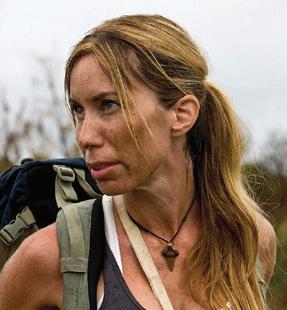
9, 16, 23, 30, 9:15 a.m.: Virtual Torah Study on Zoom. For Torah Study Zoom info., email Fran Rickenbach, franwr@ gmail.com. tidayton.org/calendar. 130 Riverside Dr., Dayton. RSVP to 937496-0050.
Children/Youths
JCC JYG Late Night at the J: Sat., Nov. 9, 7 p.m. $10. For info., email Suzzy Nandrasy, snandrasy@jfgd.net. RSVP at jewisdayton.org/events by Nov. 1. Boonshoft CJCE, 525 Versailles Dr., Centerville. 937-610-1555.
PJ Our Way Topgolf Takeover: Sun., Nov. 10, 3 p.m. $18 family. Kids 9-12. For info., contact Kate Elder, kelder@ jfgd.net. RSVP at jewishdayton.org by Nov. 7. Topgolf, 9568 Water Front Dr, West Chester. Register at 937-610-1555 or jewishdayton.org/events.
Temple Beth Or Honoring Veterans, Healing Wounds: PTSD Awareness: Sun., Nov. 10, 9:30 a.m. Free. W. Dr. Steve Taylor. RSVP at templebethor. com/events. 5275 Marshall Rd., Wash. Twp. 937-435-3400.
Temple Israel’s Ryterband Lecture Series: Sundays, 9:45 a.m. $7. Nov. 10: Dori Singer, GUCI, Why GUCI for Your Children? Nov. 17: Rabbi Shmuel Klatzkin, Rabbi Adin Steinsaltz and the Great Conversation of Jewish Life. Nov. 24: HUC Prof. Rabbi Gary Zola, Ballot Box Priorities: Do Jews Consider Themselves Jewish Americans or American Jews When They Vote? 130 Riverside Dr., Dayton. 937-496-0050.
Beth Abraham’s Rick Pinsky Brunch Speaker Series: Sun., Nov. 10, 10 a.m. $9. W. Roger Osorio, education dir. & outreach coord., the Charles Young
Buffalo Soldiers National Monument, Wilberforce. 305 Sugar Camp Cir., Oakwood. 937-293-9520.
Temple Israel Sacred Stitching: Tues., Nov. 12, 26, 11 a.m. Make items for donations w. JCRC’s Upstander initiative. For info., email Alexandria King, garyuzzking@hotmail.com. 130 Riverside Dr., Dayton. 937-496-0050.
Temple Israel Newish to Jewish: Thurs., Nov. 14, noon. Free. Learn about Jewish food. Call to RSVP, 937-496-0050 or tidayton.wispform. com/5b616837. 130 Riverside Dr., Dayton.
Movie, A Real Pain: Nov. 14-28. The Neon, 130 E. 5th St. For schedule, neonmovies.com.
Temple Israel’s So a Rabbi Walks into a Bar: Wed., Nov. 20, 5:30 p.m. First round on Rabbi Bodney-Halasz. Barrel House, 417 E. 3rd St., Dayton. 937-4960050.
Temple Israel’s How to Approach Difficult Conversations w. Children: Sun., Nov. 24, noon. Free. W. Michelle Prahl, MSW, LSW. RSVP at tidayton. wispform.com/2ce22826. 130 Riverside Dr., Dayton. 937-496-0050.
Women
Chabad Women’s Circle Shabbat Dinner: Fri., Nov. 8. Candlelighting & Kabalat Shabbat, 5 p.m. Dinner, 6 p.m. $36. RSVP at chabaddayton.com/cwc. 2001 Far Hills Ave., Oakwood. 937-6430770.
Men
Chabad Bagels, Lox & Tefillin: Sun., Nov. 3, 9:30 a.m. 13+ welcome. chabaddayton.com. 2001 Far Hills Ave., Oakwood. 937-643-0770.
Beth Abraham Rhythm ‘N’ Ruach: Fri., Nov. 8, 5:30-6:15 p.m. 305 Sugar Camp Cir., Oakwood. 937-293-9520.
Chabad Kids Make Shabbat: Thurs., Nov. 14, 4 p.m. Free. Kids 3-13 welcome. RSVP to Rabbi Simon, rabbilevi@chabaddayton.com. Family Shabbat Dinner: Fri., Nov. 15, 5 p.m. $20 adults, kids free. RSVP at chabaddayton.com/rsvp. 2001 Far Hills Ave., Oakwood. 937-643-0770.
JFS Medicare Check-Up Day: Tues., Nov. 12, 9 a.m.-noon. By appointment only. RSVP to 937-610-1555. Boonshoft CJCE, 525 Versailles Dr., Centerville.
JCC Cultural Arts & Book Series
Complete schedule on Page 14.
Readings of Anschel, a play by Michael London: Based on book by Renate Frydman. Mon., Nov. 4, 6 p.m.: Dayton Metro Library Bassani Theater Off Third, 215 E. Third St., Dayton. 937-463-2665. Tues., Nov. 12, 3 p.m.: Sinclair Community College Theatre Dept., Bldg. 2. 937-512-4580.
Univ. of Dayton Annual Kristallnacht Remembrance: Wed., Nov. 6, 5 p.m. Immaculate Conception Chapel. Livestreaming available. Contact UD Exec. Dir. of Campus Ministry Crystal Sullivan, csullivan1@udayton.edu.
Hillel Academy One Enchanted Evening: Sat., Nov. 16, 7:30 p.m. PNC Arts Annex, 46 W. 2nd St., Dayton. $95 individual, $180 couple. RSVP by Nov. 8, daytonhillel.org or 937-277-8966.


By Rachèl Laforest
With their poll numbers sinking and desperation setting in, MAGA Republicans launched a brazenly racist campaign in September targeting Haitian immigrant communities in Springfield, Ohio. Their propaganda lit a match under White supremacist forces in the small town and beyond, resulting in Proud Boys marching through its streets, children staying home after bomb threats targeted their school, and local Haitian businesses shutting down due to threats.
I bring a unique perspective to this issue as the child of both Haitian and Jewish parents who worked tirelessly for community safety and democracy here in the United States. These horrific scenes recall some of the darkest chapters of my Jewish history. It’s no accident that some labeled what was happening in Springfield as a pogrom, the term originating from mob violence against Jews in the Russian Empire. That’s why it was so disturbing to read the words of Cary Kozberg, Springfield’s only rabbi, Sept. 19, taking aim at Haitian residents as lacking “Western civilized values.” Not only do these words — which Kozberg recanted after backlash — stand directly at odds with Jewish leaders in Ohio who said they support the Haitian community — they also belie a fundamental misunderstanding of the Haitian community in this country as well as the roots and machinery of antisemitism and racism.

I learned early on that racism and antisemitism are intimately linked, two sides of the same ugly coin used together to stoke fear and spread lies. My parents worked tirelessly for community safety and democracy here in the United States. My father fled his cherished homeland, Haïti, in his early 20s, leaving behind beloved family and friends, organizations he’d helped build and strengthen, and a seemingly ceaseless battle with a vicious dictator. For more than a decade, he’d worked across class, religious and cultural differences, banded together in solidarity with his siblings, friends and neighbors to fight for communities and a country where families could be safe and thrive.
Because of the racism, greed, and constant quest for power under the dictatorship, with his life being threatened, he was forced to leave for safety in the United States. Under related circumstances, 200,000 other Haitians call the United States home under the Temporary Protected Status, granted by the Department of Homeland Security to those who can't safely return home.
My parents successfully fought for labor unions and built one of the most powerful tenants’ associations in the nation. They knew they couldn’t do it alone. Their success is owed to the coalition they built with their Haitian, Jewish, Italian, Irish, Puerto Rican and Indian immigrant neighbors. They knew that their unity wasn’t just for unity’s sake. It was strategy.
The extremist forces behind the Springfield attacks know that they can only succeed with division. They employ the machinery of antisemitism and racism to distract from the root causes of our collective struggles and turn us against each other.
I walk in the footsteps of my parents, having worked with unions like my dad, and grassroots efforts like my mom. I’ve also set out my own way, coleading the largest domestic policy group organizing Jews against these attempts to divide us from our communities. I know the machinery of racism and antisemitism can be slowed down at the ballot box, and that it can be broken with solidarity.
Rachèl Laforest is chief program officer at Bend the Arc: Jewish Action.
So, what do you think?

By Rabbi Karen Bodney-Halasz
As you are aware, the situation in Springfield has been quite tenuous over the past several weeks. All of us should be deeply concerned by what is happening in our backyard. Springfield residents are facing bomb threats and gatherings of neo-Nazis and White supremacists.
Jewish values teach us to treat all people with dignity and uphold principles of compassion, justice, and welcoming of strangers. History has shown us the dangerous path that devaluing or generalizing people based on their cultural origins can lead to.
It is essential for the Jewish community to speak out against hatred directed at any minority group. I was proud to see the Jewish Federation of Greater Dayton sent a letter of support to the Haitian community center and appreciate many of my colleagues asking for ways to offer support.
I had the opportunity on Sunday, Sept. 22 to participate in a prayer gathering in Springfield alongside diverse clergy from across Ohio and beyond. I wore a tallit (prayer shawl) once donned by Rabbi Irving Bloom, of blessed memory, in honor of our congregation’s historical commitment to social justice. These were my words:
I want to begin with a verse from Proverbs 31:9: "Open your mouth, judge righteously, and champion the cause of those in need and subject to oppression."
I stand here today because, as a Jew, my faith demands that of me. It is our responsibility to speak out against the xenophobic lies and misconceptions that threaten our neighbors. Haitian migrants, like all people, are created b'tzelem Elokim, in the image of God. When fear and prejudice dictate our actions toward others, we fragment our world further, moving us further from the world as it is meant to be.
In the Torah, the Five Books of Moses, we are commanded to protect, guard, and love the stranger no less
than 36 times. This is not simply a suggestion; it is a moral obligation rooted in empathy and shared history. Leviticus 19:34 teaches, "The immigrant who resides with you shall be to you as one of your citizens; you shall love him as yourself, for you were migrants in the land of Egypt: I the Lord am your God."
So today, we have come to speak up for the dignity of all people, regardless of where they come from or what they have endured. And so we pray: Oh God, we thank You for bringing us together today to work towards repairing our world. Thank You for reminding us that being created in Your image means diversity, not uniformity. Grant us the courage to stand up for the dignity of all, transcending fear and suspicion, and resisting the urge to turn away from those in need.
Inspire us to engage in acts of justice and compassion, working together to build a better future in Springfield alongside our Haitian brothers and sisters. Thank you, Adoshem (Lord), for the opportunity to stand here this afternoon with my partners in faith. Though we come from diverse backgrounds, we are united in our commitment to a God of compassion, who calls us to protect the most vulnerable among us. May our gathering today foster understanding and kindness among us.
Keyn yehi ratzon, may it be Your will. Amen.
In times like these, our voices and actions matter. We must stand together in solidarity, offering not only our prayers but also tangible support to those facing hatred and fear. Let us continue to live out the values of justice and compassion that our tradition calls us to uphold. Whether through advocacy, patronage, or simply reaching out to those in need, every gesture of support makes a difference. Together, we can help bring healing and hope to our neighbors in Springfield.
Karen Bodney-Halasz is senior rabbi of Temple Israel in Dayton.

Mendel Mangel, son of Devorah and Rabbi Nochum Mangel, has received his rabbinic ordination through Chabad's Machon Limud Halacha Lemaan Yilmedu program.
Orthopaedic surgeon
Dr. Marc Lubitz is now practicing with Beacon Orthopaedics and Sports Medicine in Miamisburg. Born and raised in Cin-
cinnati, Marc graduated from Wright State University's Boonshoft School of Medicine. He completed his fellowship in sports medicine and shoulder replacement surgery in Phoenix after his residency in orthopaedic surgery at the University of Massachusetts Medical School in Worcester. Marc specializes in shoulder, knee, and elbow injuries.
Clara Hochstein celebrated her 100th birthday on Sept. 28 with friends and family. She received proclamations honoring her from the state of Ohio and from the city of Oakwood, where she and her husband, the late David Hochstein, owned and operated their fur business for 26 years.

program. Kyra has also just received her Ph.D. in theatre from Louisiana State University.

The JCC Early Childhood Education program has joined a pilot program of the Penn State Hammel Family Human Rights Initiative and Penn State's Holocaust, Genocide, and Human Rights Education Initiative. Over a series of classes, educators learn to model empathy and create equitable learning spaces. Dayton's JCC is one of four JCCs in the pilot. ECE instructors enrolled in the course are Director Katie Lagasse, Assistant Director Rebecca Levi, Julie Dickinson, and Melissa Flaim

Kyra Smith, managing director of University of Dayton's Roger Glass Center for the Arts, will teach the remote course, Yiddish Theatre From Then to Now, Monday afternoons, Nov. 25 to Dec. 16 for Case Western Reserve University's Siegal Lifelong Learning

Temple Anshe Emeth in Piqua welcomed its rabbinic intern for the year, Jonathon Benzion, in October. Jonathon was born in Mexico City, lived in Israel, and holds a Ph.D. in Iberian and Latin American studies from the Sorbonne in Paris. He's a fourthyear rabbinical student at Hebrew Union College in Cincinnati.
Send your Mazel Tov announcements to mweiss@jfgd.net.
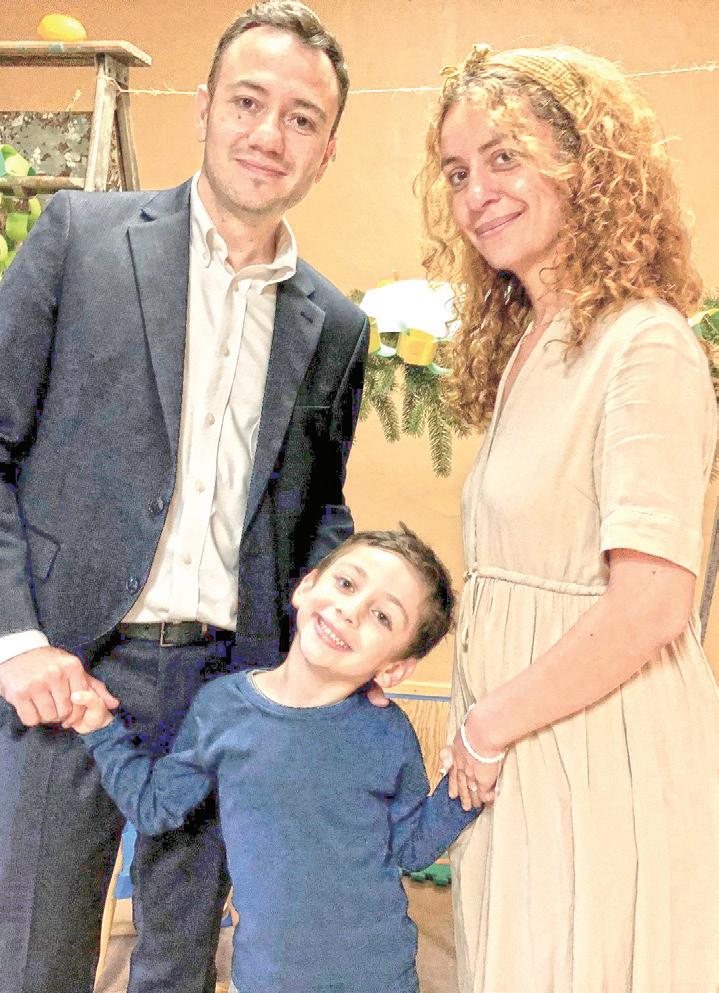
as they cope with the effects of PTSD. Refreshments will be provided, and there will be several raffle prizes for our veterans


Beth Abraham Synagogue Conservative
Rabbi Aubrey L. Glazer
Fridays, 5 p.m.
Saturdays, 9:30 a.m.
305 Sugar Camp Circle, Oakwood. 937-293-9520. bethabrahamdayton.org
Beth Jacob Congregation
Traditional Rabbi Leibel Agar Saturdays, 9:30 a.m. Evening minyans upon request. 7020 N. Main St., Dayton. 937-274-2149. bethjacobcong.org
Temple Anshe Emeth Reform
Rabbinic Intern Jonathan Benzion Sat., Nov. 16, 10 a.m. 320 Caldwell St., Piqua. Contact Steve Shuchat, 937-7262116, ansheemeth@gmail.com. ansheemeth.org
Temple Beth Or Reform
Rabbi Judy Chessin
Asst. Rabbi/Educator Ben Azriel Fridays, 6:15 p.m. 5275 Marshall Rd., Wash. Twp. 937-435-3400. templebethor.com
Temple Beth Sholom Reform
Rabbi Haviva Horvitz 610 Gladys Dr., Middletown. 513-422-8313. templebethsholom.net
Temple Israel Reform
Senior Rabbi Karen BodneyHalasz Rabbi/Educator Tina Sobo Fri., Nov. 1, 6 p.m. Fridays, Sept. 8, 15, 22, 29, 6:30 p.m. Sat., Nov. 2, 9, 10:30 a.m. 130 Riverside Dr., Dayton. 937-496-0050. tidayton.org
Temple Sholom Reform
Rabbi Cary Kozberg Fridays, 6 p.m. 2424 N. Limestone St., Springfield. 937-399-1231. templesholomoh.com
By Rabbi Leibel Agar
Beth Jacob Congregation
As November rolls around, my thoughts turn to Thanksgiving. For many Americans, Thanksgiving is a chance to take a break from work or school and hang out with our families. We gather around the table and share a big dinner of turkey and stuffing, then top it all off with homemade apple and pumpkin pies for dessert. Those of us who are football fans settle in on the couch to watch the Detroit Lions and Dallas Cowboys (the two teams who purchased exclusive rights from the NFL
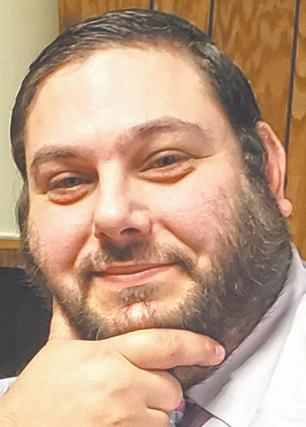
holiday to be truly fascinating. Though most of us learned in school about how the Pilgrims and Native Americans made a big feast to show their gratitude after a particularly difficult winter, many people are unaware that the Thanksgiving feast did not originate at Plymouth Rock; it is really a tradition that goes back millennia!
to play on Thanksgiving Day back when football was first televised). Some of us wake up early the next morning to take advantage of the Black Friday deals at our malls and department stores.
In my family, Thanksgiving was special because we usually had a huge family gathering; even my relatives from upstate Ohio would be there. Most of us, adults and children alike, would go outside to play the annual touch football “Thanksgiving Bowl” before dinner.
The meal was highlighted by the birthday celebration we would have for my brother (born on Thanksgiving Day). After dinner, the adults and older children settled down to play nickel-and-dime poker and the younger ones would entertain themselves channel surfing on Grandma’s TV. No matter what else was going on in our lives, we always had fun on Thanksgiving.
As a student of history, I've always found the origins of this
Chabad of Greater Dayton Rabbi Nochum Mangel
Associate Rabbi Shmuel Klatzkin
Youth & Prog. Dir. Rabbi Levi Simon. Beginner educational service Saturdays, 9:30 a.m. 2001 Far Hills Ave. 937-643-0770. chabaddayton.com
Yellow Springs Havurah Independent Antioch College Rockford Chapel. 1st & 3rd Saturday each month. Contact Len Kramer, 937-5724840 or len2654@gmail.com.

November 1: 6:16 p.m.
November 8: 5:09 p.m.
November 15: 5:02 p.m.
November 22: 4:58 p.m.
November 29: 4:55 p.m.
Rabbi Yitz Greenberg, 91, writes the ‘big book’ his admirers had been waiting for
The Modern Orthodox philosopher talks ideas he’s developed over seven decades, the toll the war in Gaza has taken on his family, and why he became a vegetarian.
As far back as biblical times, there are references to people making a Sudat Hodahah, a Meal of Thanksgiving as a way of thanking God for something. For example, the Kohen Gadol, High Priest, would host a Meal of Thanksgiving, for the entire city of Jerusalem on the day after Yom Kippur, as a way of thanking God for being able to enter and exit the Holy of Holies safely. There was even a special offering of Thanksgiving, the Korban Todah, which could be brought by someone wishing to thank God.
Unfortunately, the reasons behind Thanksgiving are often overlooked. Though the lack of the Holy Temple and the offering services conducted there certainly play a role, I believe there is a much greater reason as to why the religious connotations of Thanksgiving have faded — a simple lack of gratitude. Sometimes people may see the things they have received as what they deserve rather than as a gift. Worse still, they may view these blessings as insufficient reward for what they have done; instead of appreciating the blessing, they complain and demand more.
Perhaps the holiday of Thanksgiving is meant to remind us to be grateful for that which we have and to always show the attitude of gratitude toward God and toward others.
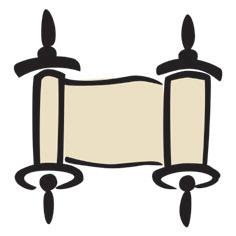
November 2: Noach (Gen. 6:9-11:32; Num. 28:9-15)
November 9: Lech Lecha (Gen. 12:1-17:27)
November 16: Vayera (Gen. 18:1-22:24)
November 23: Chaye Sarah (Gen. 23:1-25:18)
November 30: Toledot (Gen. 25:19-28:9)
By Andrew Silow-Carroll, JTA
In the late 1990s, I would joke that my family and I lived on “Planet Yitz.”
Our children attended SAR Academy, the co-ed, educationally progressive Modern Orthodox day school co-founded by Rabbi Irving “Yitz” Greenberg in 1970.
I worked at CLAL, the Jewish think tank founded by Greenberg, Elie Wiesel, and Rabbi Steven Shaw in 1974 as an experiment in dialogue across the Jewish denominations.
And we lived in Riverdale, N.Y., not far from where Greenberg and his wife, the Orthodox feminist pioneer Blu Greenberg, raised five children and where Yitz had served as rabbi at the Riverdale Jewish Center in the 1960s.
“Planet Yitz” was also a state of mind: As a Modern Orthodox philosopher, Greenberg wrote about a Jewish world shattered by the Holocaust and forced to create a new, life-affirming reality in what he called the “Third Great Era” in Jewish history. This era would be marked by Jews taking full responsibility for their own destiny, from creating the state of Israel to developing new Diaspora institutions that would promote and celebrate the full range of Jewish religious and ethnic identity. At the core of this philosophy was the traditional concept that all humans are created in God’s image, radical pluralism and a reverence for life, its quality and quantity.
The institutions he created or influenced — SAR, CLAL and the U.S. Holocaust Memorial Museum, where he served as chairman from 2000 to 2002 — reflected these ideas in sometimes controversial ways.
Like Blu, he became a leading Orthodox feminist, pushing for expanded women’s roles in learning and leadership. He was a proponent of interfaith
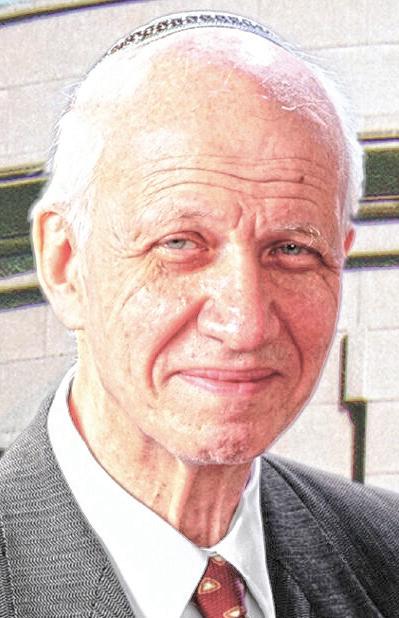
dialogue when other Orthodox Jews resisted sitting down with leaders of other religions. Traditionalists bristled at his notion that the Holocaust had “broken” God’s covenant with the Jewish people, and that since Auschwitz, God had become paradoxically both more hidden and more available. And he sought to elevate the status of Jewish philanthropists and other lay leaders, however secular they might be, suggesting they were at least equals with rabbis as religious role models and community leaders.
Over seven decades, Greenberg explored these ideas directly in a series of seminal papers and interviews and perhaps more indirectly in five books, including a classic guide to the Jewish holidays and a book about interfaith dialogue. What he hadn’t written was the “big book” — the capstone volume laying out his theology and agenda for the Jewish people. Until now.
The Triumph of Life: A Narrative Theology of Judaism, published in August, is what Rabbi Shai Held, president and dean at Hadar (where Greenberg is now the senior scholar in residence) calls a “culmination of a
lifetime of theological reflection.”
“The truth is, I didn’t think it would take this long,” Greenberg, 91, told me. “But I want to push the book not in the interest of sales, because I think the Jewish people need a narrative right now.”
Greenberg serves as president of the J.J. Greenberg Institute for the Advancement of Jewish Life. He was born in Brooklyn and in 1953 was ordained there at the Beis Yosef yeshiva. He was one of the founders of the Student Struggle for Soviet Jewry and earned a Ph.D. in history from Harvard University. In the 1970s, he served as professor and chairman of the Department of Jewish Studies of City College of the City University of New York.
Greenberg spoke with me from Jerusalem, where he and his wife have lived mostly full time for the past five years. We spoke about the policy implications of his theology, the toll the war in Gaza has taken on his family, and why he became a vegetarian.
Congratulations on the book. And I must be honest: I think many people were waiting many years for your magnum opus. I wonder if you thought about it the same way, that you wanted to write the big book and pull all your ideas together between two covers. Do you agree with Shai Held that this is a culmination of a lifetime of thinking?
In some ways, the answer is yes. I started working on it in 2009 when I retired. But it came out as a kind of academic, more abstract and more theoretical book, and at the end of four years, I said, “This isn’t the book that I want to write.” I wanted to write a book that would speak intelligently to a lay audience. So I just put it aside and started over again.
take power and overcome the enemies of life. It is not that God is uncaring, but God really wants humans to take full responsibility. Reward and punishment is no longer the model. It’s all about relationship and shared values.
And therefore, the covenant is not broken, not failed, but it is voluntary. We’re choosing to do God’s work. So the book in one way walks back the notion of “brokenness” and on the other hand it claims that this is truly a voluntary, transformed covenant in which we each have a commitment to tikun olam — world repair.
Tikun olam has come to be associated with liberal Judaism and universal social justice, but in the book, you claim the concept is a responsibility of every Jew, no matter their movement or denomination. Do you worry that Orthodox Jews might reject the idea of tikun olam precisely because it has become central to liberal movements?
Thank you for picking that up. That’s correct. Tikun olam is easy to dismiss if you want to interpret Judaism as a tribal religion. But it is a world religion. Bereshit, the first book of the Torah, famously starts with the creation of the world, and not with the first mitzvah God commanded of Abraham. (The medieval commentator) Rashi said the point of starting there was to validate our claim to Israel — but if so, why not start with Chapter 12, when God promises the land to Abraham?

So while the book is a culmination, some of my main ideas have come and gone, meaning I had to revise them.
What’s an example of an idea you long held but felt you needed to revise?
In 1961 I was shattered when I immersed myself in the evidence of the atrocities of the Holocaust, and as a result had written that God had broken the covenant with the Jewish people by not protecting the Jews. When I said that, it was probably the peak of the backlash I faced from the more traditional sectors. I also argued that in the first great era of Jewish history, the biblical era, God was dominant and visible, and in the second, the rabbinic era, after the destruction of the Second Temple, God self-limited, essentially saying that human behavior will make much more of a difference should they take more responsibility for themselves. We’re now in the third stage, where God is completely hidden but wants humans to
What I argue is that the purpose of starting with the creation of the world is to demonstrate that the first covenant is not Jewish, and that God wants to redeem the whole earth and all of humanity, not just the Jewish people. When it comes to overcoming oppression, discrimination, racism and sexism, if you strip away political and tribal visions, the idea of repairing the world is for everybody.
Do you worry that tikun olam can become an end in itself, or just another word for universal justice, and you can end up losing the Jewish language or distinctiveness?
After the Shoah, I became a pluralist, and came to realize that the other versions of Judaism and its secular version are very, very important. In the Third Era, the most important thing is for humanity to take power. So the secular Zionists focused on the human and on the ethical and on the historical homeland, and the Haredim said no because they were trying to be faithful to an earlier encounter with God. But that’s not what God was asking for.
And unfortunately, many religious Jews focus on the ritual and not necessarily the ethical. So my answer is that Continued on Page 22


Continued from Page 21
a lot of the so-called secular or non-Orthodox Jews experience the covenant’s sustaining power, and feel responsibility and a sense of belonging to a covenant dedicated to battling for life in every field.
Central to your theology, and it’s in the title of your book, is that Judaism prioritizes upholding the quantity and quality of life over all competing values and interests. You write, “In the Third Era, all human actions should strive more intensely to make the Earth more hospitable to life and more sustaining of a higher quality of life,” and you even apply that to the policy dimension, in terms of protecting the environment, investing in health care, housing and mass transit, protecting workers’ rights and regarding same-sex relationships as natural and even holy. Are you optimistic? Do you think the world is moving towards a place of maximizing life in both quantity and quality?
My answer is that there are major breakthroughs in all these areas. Absolutely. Overcoming poverty, developing human dignity, the concept of liberal democracy, these are major accomplishments. We’ve had amazing progress. However, and this is what we learn from the Shoah, number one: the culture
itself, with all of its good qualities, can be applied and harnessed for bad things, the way the Nazis perverted some of the most powerful and constructive elements of modernity and technology. Bureaucracy, for example, makes possible most of the great, constructive accomplishments, like Social Security. But they took those forces of technology and rationality and bureaucracy and they harnessed them for death. Progress is real, but it’s not automatic and it’s still heavily driven by human choice.
What does belief in God add to this equation?
One of the prices we pay, and in part I blame religious leadership, is that people say, “Well, we’re the masters of the universe. There is no god. Humans are doing all this.”
'I
vegetarian?
Since 1991. I was influenced by the (biblical scholar) Jacob Milgrom’s evidence that kashrut is at root an ethic of vegetarianism. You are allowed to eat meat, but the Torah puts restrictions, heavy restrictions, on what you can and cannot eat, and all of these restrictions apply to flesh.
believe Israel has been a light unto the nations, but at the moment its reputation is not showing much light.'
Modernity lost a sense of confidence, lost a sense of accountability, lost a sense that there is a power higher than us. A lot of the pathology we’re seeing now — global crises, environmental crisis, global warming — these are all reflective of the breakdown of a sense of partnership with a higher power.
You apply the notion of the dignity of all life not only in the policy sphere but in personal behavior, including sexuality and the things we eat. Remind me – I remember that you are a

can you do in the face of this tragedy? Have a child.” In the book, I write about the Displaced Persons camps after World War II, which had an explosive birth rate — they responded to death by increasing life.
If you are committed to maximizing life, you don’t kill and eat animals, and if you must, you kill them painlessly. You don’t eat blood, because that is your admission that life really shouldn’t be taken away. So kashrut is really a way of reshaping eating to maximize life, which extends to eco-kashrut, which means for example not eating fish that is being overfished, and expanding the rights of workers who bring meat to the market.
I had tried being vegetarian earlier, but my mother served steak regularly because she loved her children. If you didn’t eat her steak she felt like a failure, so I came to feel that meat is love. In 1991, my cholesterol was way too high. A doctor suggested pills, but I asked if I could change my diet and he reluctantly said yes. So I switched to vegetarianism. I got my cholesterol under control but sometimes feel I chose my cholesterol over a mother’s love.
Have you been in Israel since Oct. 7, 2023 and during the war? I wonder if any of the awful events of the past nine months challenged your theology, or confirmed aspects of it.
We were here on Oct. 7 and have been here since. It’s had a crushing, negative aspect in many ways. For example, one of my grandsons is (an Israeli equivalent of) a Navy Seal; he went south that day and arrived to see the catastrophic aftermath. He was devastated and angry. As a moderate, a centrist, he saw evil and how vicious (Hamas) were. He has calmed down a bit but his anger was consuming.
The second, tougher example, is when another of my grandsons took part in a mission to free hostages, and instead got involved in a bloody fight, and he was badly wounded. And here is the paradox of life and death: Israeli medicine is amazing. The doctor told our daughter, “If this happened 50 years ago, he would have been dead from loss of blood. If it happened 20 years ago, he would have lost the use of his legs.” Instead, they were able to evacuate him to Soroka Hospital, and they have methods of growing bone that by the end will restore the use of his legs. He’s had 20 operations, but the bottom line is the human capacity to do amazing things.

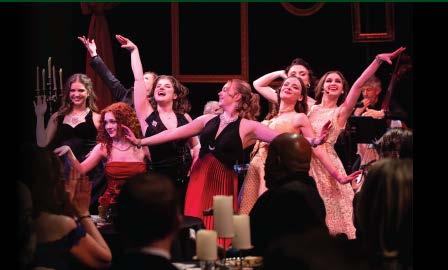
And here is the last example. He is the middle of three older sons. Two weeks ago the wives of the number one and number three sons each had a baby. We became great-grandparents twice in one week. When we asked them about the timing, they said, “After Oct. 7, what
In your book, you describe the Israel Defense Forces as the “most moral army in the world” and the lengths it goes to avoid civilian casualties in asymmetrical wars like the one in Gaza. And yet the enormous death toll has given pause even to Israel’s supporters, including in the White House and to be honest in a number of synagogue pulpits here in the U.S. Has the war shaken your faith in the government or the military?
It’s a miserable government. I’ve written a number of articles about this. But a lot of the criticism of Israel is unfair, including distorted claims of a genocide. I recall an article about Richard Kemp, head of the British forces in Afghanistan, who regarded it as extraordinary that Western armies reduced Afghan civilian casualties to three or four civilians for every Taliban fighter killed. And in the Gaza war, Israel claims to have kept that rate to one to 1.5 civilians for every fighter. (Israeli Prime Minister Benjamin Netanyahu told Time magazine the ratio of civilians to combatants killed in the war has been “one-to-one.”) And this is a situation in which Hamas has taken over mosques and schools in order to maximize civilian casualties.
That being said, there has been real reputational damage to Israel, much of that self-inflicted, thanks to (far-right government ministers) like (Bezalel) Smotrich and (Itamar) Ben-Gvir. Religious-based parties such as the Religious Zionist Party and Otzma Yehudit pushed the government to inflict more damage on Palestinians and to hold back humanitarian aid. Smotrich and Ben-Gvir have said they wanted Palestinians to die. To keep himself in power, Benjamin Netanyahu has allowed this.
I regard Israel as the greatest expression of Jews taking power for themselves for the sake of life, liberating millions of Soviet and Ethiopian Jews, and Jews from Arab countries. And they created a democracy. That was a great adventure, a great accomplishment, but it can be taken for granted, and power can be abused. There are no guarantees. I believe Israel has been a light unto the nations, but at the moment its reputation is not showing much light.
But I believe that Hamas will fall, and we’ll see a future where on balance Israel’s democracy will extend more dignity to the Arabs. I do believe that. After the Holocaust and from the beginning of the state of Israel, Jewry had to develop new ways of obtaining power to protect itself. That is the greatest challenge: exercising power for the sake of life. It is an unfinished agenda.
Andrew Silow-Carroll is editor at large of the New York Jewish Week and managing editor for ideas for JTA.
The Talmud tells of a man who prepared a party, but the invitation to his friend Kamtza mistakenly went to his sworn enemy, Bar Kamtza. When the host discovered his enemy at the party, he ordered, “Get out!” Bar Kamtza offered to pay for his food, or half the cost of the party, even for the entire party to stay and avoid public embarrassment. But the host threw him out as the sages and guests watched, silent. Hu-

miliated and disillusioned, Bar Kamtza went to the Roman emperor and maliciously reported, “The Jews are rebelling against you.” The emperor asked for proof. “Send them an offering,” said Bar Kamtza, “and see whether they will offer it on the altar.” So the emperor sent him back with a calf on which Bar Kamtza made a blemish, making it ritually unacceptable for sacrifice. In order not to offend the emperor, the rabbis were inclined to offer it, but Rabbi Zechariah pointed out it would set an unholy precedent. So the sacrifice was not offered. As a result, the emperor appointed Vespasian to suppress the Jewish revolt. He reestablished Roman control over Judea and then besieged Jerusalem for three years before it fell in 70 C.E.
This tale upends the old playground rhyme, “Sticks and stones will break my bones, but words can never hurt me.” In Jewish thought, language used improperly has the power to embarrass, endanger, destroy, and even kill. Colloquially, all such language, true or not, is referred to as lashon hora, evil speech. One of its most ubiquitous forms is gossip (rechilut), described by
Maimonides as “going around telling people what other people have said or done.”
It is unambiguously prohibited in Leviticus: “Do not go up and down as a talebearer (rachil) among your people.”
There are no exclusions either, Jewish author Tracey Rich clarifies: talebearing is prohibited “even if it is not negative, even if it is not secret, even if it hurts no one, even if the person himself would tell the same thing if asked!”
The term for a gossip, rachil, comes from the word rocheyl — a peddler, trader, or merchant. Thus, in the words of Rabbi Jack Abromowitz, “the gossip is like a salesman, going door to door hawking their merchandise…,” dealing in information instead of goods.
While it may appear to be innocuous, gossip often has unforeseeable negative repercussions. Illustrating its pitfalls is a famous Jewish folktale about a town gossip. When he sees the unintended unrest his gossip has caused, he goes to the rabbi for advice on how to make amends. “Go home, cut open a feather pillow, and shake it vigorously out the window,” the rabbi tells him. When the man returns to ask what to do next, the rabbi orders him to collect all the feathers, every single one, and stuff them back into the pillow.
David provisions and a weapon, but implied that all the priests were conspirators with David and had armed him to kill the king. Saul ordered Doeg to kill them all. Doeg eagerly killed the 85 priests along with their wives, children, and nursing babies.
Religious educator Jay Gallimore concludes, “Such were the results of ‘truth’ cooked into gossip for personal gain and fed to an appetite that craved it.”
In Jewish thought, language used improperly has the power to embarrass, endanger, destroy, and even kill.
Motzi shem ra, bringing about a bad name, involves spreading malicious or damaging lies, hearsay, rumor, or false reports about another person in speech (slander) or writing and imagery (libel). Collectively known as defamation or calumny, it is considered in Judaism to be the worst type of speech. Unfortunately, we can observe motzi shem ra reaching epidemic proportions in the social environment and media today. One particularly egregious example is the modern iteration of the age-old blood libel against the Jews.
stealing organs from Palestinians killed in Gaza, claim that murder of children is a preferred Israeli ritual, assert that Prime Minister Benjamin Netanyahu drinks Palestinian blood, and recall the ancient libel in images of bleeding babies.
Judaism is intensely aware of the wondrous power of speech as well as its potential for harm. We read in the Torah that the entire universe was created with words.
In the name of Rabbi Yosei ben Zimra, Rabbi Yohanan teaches that the tongue is an instrument so dangerous it must be kept hidden from view and behind two protective walls (teeth and lips) to prevent its misuse.
Of the 43 sins enumerated in the confessional Al Chet prayer recited on Yom Kippur, 11 have to do with speech. According to the prophet Jeremiah, speech is like an arrow: once words are released, they cannot be recalled, the harm they do cannot be stopped, and the harm they do cannot always be predicted, for words like arrows often go astray.
The man stares at the rabbi in disbelief. “That’s impossible! I’ll be lucky to find any — they’ve flown everywhere!”
“Just like the feathers,” the rabbi points out, “words once spoken cannot be retrieved.”
There are two particularly egregious forms of talebearing: lashon hora and motzi shem ra. The precise meaning of lashon hora is negative talk about a person, often true and frequently expressed as insinuation or allegation, in a deliberate attempt to cause harm.
A biblical story about Saul’s jealousy of David provides a classic example.
Despite David’s sworn allegiance, King Saul set out to kill him, so David fled to the priestly city of Nob. Having observed the events there, the evil royal herdsman Doeg the Edomite accurately reported to Saul that the priest gave
The Madwoman in the Rabbi’s Attic: Rereading the Women of the Talmud by Gila Fine. Among the mostly marginal and anonymous women of the Talmud are six exceptions who, at first glance, appear to be a feminist’s nightmare. But all is not as it seems on the surface. A lecturer of rabbinic literature at Pardes, author Gila Fine does a deep dive into these heroines’ stories in the Talmud and reveals unexpected richness in their characters, in rabbinic views of women, and in moral teachings about how we view the people in our lives.
A Feather, A Pebble, a Shell by Miri Leshem-Pelly. Through inviting watercolor images and lyrical text, the wondrously diverse land, nature, and history of Israel come to life in this unique picture book for primary grades. From the northern forests to the southern desert, a young explorer climbs through caves and canyons, hikes up and down hills, and splashes in rivers and seas. Along the way, she discovers small objects to hold that bring history, the Bible, and more to life, and then leaves the treasures in their habitats for the next explorer to find.
“In recent years, there have been a number of antisemitic accusations of Israel harvesting organs of Palestinians,” reports the ADL. Since the Oct. 7 massacre in Israel, anti-Israel voices from America, Europe, and Australia have increased the volume of cartoons and social media posts that accuse Israel of
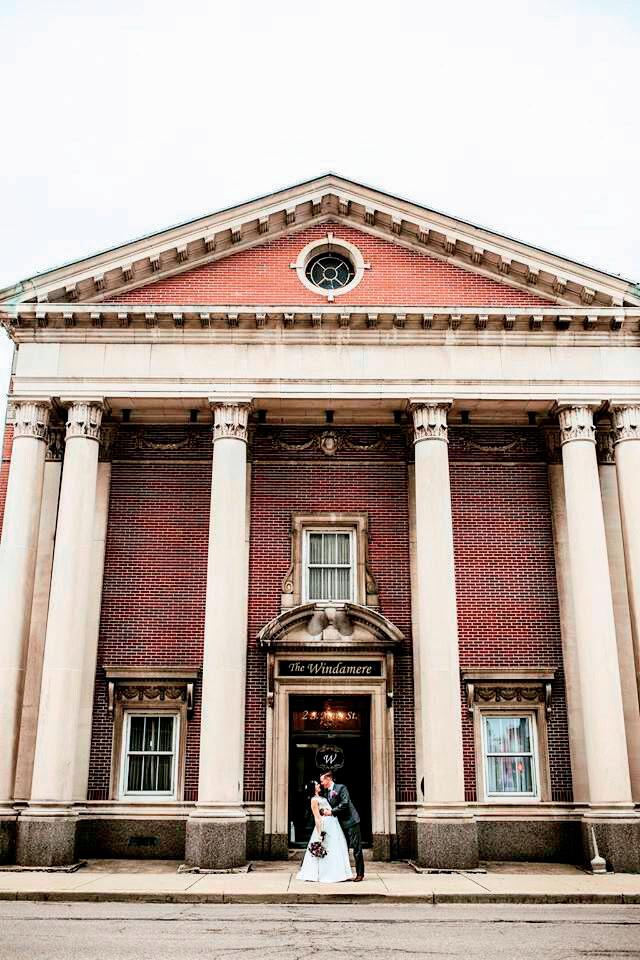
We are obligated to respect every person as created in the image of God, especially in our speech. And the Talmud warns that speech about a third party has the potential to kill three: the one who speaks, the one who listens, and the one about whom they speak. We ought to keep these in mind every time we open our mouths to speak.






Jews and Black people mingled easily in the American music scene of the 1940s and ’50s because they had much in common, and because it was fun.
Author Larry Tye will open the JCC's Cultural Arts & Book Series Nov. 3 with an in-person talk at University of Dayton's Roger Glass Center for the Arts. The Dayton Jazz Ensemble, directed by Willie Morris III, will also perform.
By Larry Tye, Tablet magazine
It’s getting difficult to remember that Black people and Jews once worked shoulder-by-shoulder to promote human rights and caroused together simply because it was such fun and they shared so much.
Nowhere was that alliance more inspired than in the arena of jazz, and no maestros did more to encourage it than three of the genre’s greatest musical titans—Louis “Satchmo” Armstrong, Edward Kennedy “Duke” Ellington, and William “Count” Basie.
In his early years, Armstrong was as snakebit when it came to picking a manager as he was in choosing his spouses, of whom he had four.
First up to oversee his burgeoning career was then-wife Lillian Hardin Armstrong, whom he stopped trusting to look out for his professional interests when their marital bonds unraveled in the late 1920s.
Next came Tommy Rockwell. The brash record producer transformed Louis from jazz artist to pop star, but when he and his star parted ways on next steps, Rockwell goaded him with a pistol-packing mobster who left the trumpeter cowering in a phone booth.
Johnny Collins, a nervous and nervy booking agent, promised to clean up the mess. The mustachioed manager did catapult his industrious client to greater success, but Collins went too far first by telling the music man not just where to play but what, then by assaulting him with the N-word.
“Not that I haven’t been called a ‘n----’ before,” an enraged Satchmo admonished the blind-drunk Collins as he was firing him. “But from you?”
All of which made the trumpet master rethink the counsel drummer and mentor Black Benny Williams had given him years before, in Jim Crow New Orleans: Always have a White man with his hand on your shoulder warning, “This is my n----- and can’t nobody harm him.”
Rockwell and Collins were White, but turned out to be more Satans than saviors. Could Black Benny have gotten it wrong?
Louis’ third White man would prove
to be his charm, unlikely as that seemed at the time.
Bertha and George Glaser had hoped their son Joseph would become a doctor like his dad, and a cultured patron of Chicago arts like both parents. Joe made it as far as medical school, but was stopped in his tracks at the first sight of blood.
Not long after, he was running what he boasted was “the biggest chain of whore houses on the South Side of Chicago” along with a lounge that was a favorite watering hole for Al Capone and his mob.
This being the time of Prohibition, police raided the Sunset Café on Christmas Day in 1926. The judge fined Joe $200 and pronounced his club “a public nuisance” after reviewing evidence that “girls of 17 were brought to the café by escorts and carried off the dance floor drunk.”
Glaser’s ticket back to solvency and respectability came courtesy of Black entertainers, and especially Louis Armstrong, who was as broke as Joe in 1935.
Desperate for a manager to reset his career, Louis believed his best option was another White scoundrel.
“I went to Papa Joe Glaser and told him I was tired of being cheated and set upon by scamps,” recalled Louis, who’d met Glaser years earlier. “I told him, ‘Pops, I need you. Come be my manager. Please! Take care of all my business and take care of me. Just lemme blow my gig!’"
A handshake later they were partners, for life. Louis hated managing his bands or his business affairs. This new arrangement would make Satchmo rich and Glaser richer, and set a template for the wider world of Black entertainers and their White handlers.
The showbiz world didn’t know what to make of this oddest of couples: a foul-mouthed, middle-class Jewish kid from Chicago’s North Side looking for some South Side street cred, and a Black child of the ghetto eager for respectability.
While their relationship was multilayered and not always on level terms, Joe Glaser meant it when he said of Louis Armstrong, “To me he’s like a son. A brother,” and when he told his most cherished ward, “Louis, you’re me and I’m you.”
Louis, who grew up essentially fatherless, returned the compliment:

“Askin’ me about Joe is like askin’ a chile ’bout its daddy.”
Irving Mills did as much to set the trajectory of Duke Ellington’s career as Joe Glaser did for Satchmo, although Mills didn’t last as long and was more of a spinmeister than a gangster. Mills had it easier because his client wasn’t a three-time loser when it came to picking managers, but Ellington did need handholding as he sought to break out of the big-band pack.
In Washington, when he was starting out in the early 1900s, Duke managed himself. He picked the tunes, booked the jobs, set and collected fees, and paid band members.
He reached out with his era’s best marketing devices — newspapers and phone directories — offering “irresistible jass” for “select patrons.” While many of his patrons were indeed select — highbrows from the countryside with the time and cash for horse shows and fox hunts — others were urban and Black.
He learned tricks like talking fast on the phone to make people think he was rushed. And he tapped his skills as a visual artist to run a sign-painting busi-
ness on the side, then “when customers came for posters to advertise a dance, I would ask them what they were doing about their music. When they wanted to hire a band, I would ask them who’s painting their signs.”
He’d need more than his knack for hustling when he left the slow-paced and familiar capital in 1923, and headed to the fast-track, less forgiving Gotham. His first three years there showed his talents as a songwriter and bandleader, but they required moving from club to club, then, when city residents cleared out for the summer, to mill towns and oceanside resorts in New England.
The Washingtonians were known but
The Jazzmen author Larry Tye and the Dayton Jazz Ensemble, directed by Willie Morris III, open the JCC Cultural Arts & Book Series, 2 p.m., Sunday, Nov. 3 at University of Dayton's Roger Glass Center for the Arts, 29 Creative Way. In partnership with the University of Dayton Departments of Communication and Music and the Alumni Chair in the Humanities. $10, free with valid student ID. Register at jewishdayton.org/event.
not renowned. Duke seemed to have plateaued when, on a late night in 1926, he met Isadore Minsky — known then by the WASPy pseudonym Irving Mills that he bestowed on himself.
In Mills’ colorful version, it was love at first sight when the dapper 32-year-old with slicked-back hair heard Ellington and his orchestra at the Kentucky Club, a cramped basement night spot in Times Square.
A few days later, Mills came to Ellington with a proposition: “How about doing records, Duke?”
Irving wasn’t an obvious choice. Small and squat, he had the limited vocabulary one might expect of a young man who was born in Odessa and grew up with Russianspeaking parents in the Jewish enclave of New York’s Lower East Side. There’d been little time for school after his father died, when Isadore was just 11. He lacked the toughness, or tough friends, that made Joe attractive to Louis, but also came free of Glaser’s penchant for underage girls and grown-up mobsters.
Irving married at 21 and eventually had to support seven kids. He had a decent voice and an uncanny ability to reimagine songs he’d heard. He plugged tunes by crooning them behind the music counter of Snellenburg’s Department Store in Philadelphia, nudging customers to buy, then for Broadway producer Lew Leslie, urging bandleaders to play Leslie’s verses.
More than anything, Irving was a go-getter with what his parents, Hyman and Sophia Minsky, would have called chutzpah. In 1919, he and older brother Jack started Mills Music to publish songs, and they soon progressed to producing records and scouting talent.
He paid desperate songwriters $20 to $30, which was a lifesaver for the musicians and a steal for the Millses. With Duke, Irving said he knew from the first they could go great places.
He had a simple plan for the Washingtonians: Promote Duke not as a run-of-the-mill bandleader or piano player, but as a composer, an artist, and a genial genius. It wasn’t a hard sell because it was true, or would be soon.
No one had ever tried making a pitch like that on behalf of a Black jazzman. Would the rest of the band, used to work-
ing collaboratively back when Duke replaced Elmer Snowden, tolerate Mills’ transparent bid to sideline their efforts as soloists, improvisers, and arrangers, and give all the credit to the bandleader-composer? And could Ellington really move from "Negroes-only race records" to the multiracial mainstream? Others had doubts, but not a natural-born fast talker like Irving Mills.
“When I got into the Black thing, I figured I might as well corral something so that I could have control of something, and these people are appreciative,” explained Mills, who fancied himself the Abe Lincoln of the music world.
“A dollar don’t care where it comes from, whether it’s black, green...Everybody looked down at me. They said, ‘Geez, he fools around with n------. N----- bands.’ And just because I started this and it worked so good, all the other Black people started to come around to me, all the best of them...We were always ahead of ourselves.”
He stayed ahead, of his time and his competitors. He fed journalists catch phrases to describe Duke, including “Harlem’s Aristocrat of Jazz” and “the Rudy Vallée of the colored race.”
He linked his commercial success to community-minded causes, letting it be known that Duke “will appear anywhere in behalf of a milk and ice fund, shoe fund, boys’ camp fund or any similar activity, or for the entertainment of war veterans, crippled children, aged persons or other hospital shut-ins.”
He and Duke burnished the Ellington resume, suggesting that the bandleader had graduated from high school and attended a conservatory.

here and abroad from the Roaring Twenties into the Threadbare Thirties.
The band grew as did its record deals and booking fees.
Irving knew what the public wanted and he and Duke delivered. Yes, that meant “jungle music,” with light-skinned, barely clad chorus girls. Yet along the way, Irving and Duke — whose complexion The New Yorker described as coffee with a strong dash of cream — loosened those restrictions.
Theirs was the first Black ensemble in a major Hollywood feature, the first in a Ziegfeld show on Broadway, and, in time, the first to replace "jungle" with genius as its marketing master plan.

Mills’ industriousness paid off big. Prior to 1930, Duke’s name appeared a mere 15 times in the national edition of the Chicago Defender, America’s leading Black newspaper. From then until 1935, with Mills overseeing a stable of publicists, Ellington was mentioned there in 284 separate stories. By branding his client as a philanthropic artiste and incessantly hyping him in the press, Mills got Ellington into Harlem’s jazzy Cotton Club. He secured unmatched national radio play and singular tours
Black people and Jews also shared long and rich histories of music as an outlet or escape in repressive circumstances.
Count Basie’s first and most influential manager didn’t fit that mold. John Henry Hammond was less of a handler than a spotter, enabler, producer, and critic.
He hadn’t risen from his bootstraps and wasn’t street smart. A Yale dropout, he’d grown up in a Manhattan mansion with a houseful of servants, private schools including St. Bernard’s and Hotchkiss, and a lineage that included great-great-grandfather Commodore Cornelius Vanderbilt and a namesake father who worked as a banker, railroad executive, and lawyer.
Though from an establishment WASP family, John II always purposefully identified with underdogs, especially Jewish ones. He searched for Hebrew ancestors and told people, “I wanted to be Jewish.”
can Express Company, Paris, France. If you mail it now, it’ll about get there the same time as me. No doubt you’ve received the money I wired you, eh?”
Armstrong’s connection to Jewish people was about more than money, dope or even music. He considered them to be his family. The jazz titan began the last of his four memoirs, Louis Armstrong + the Jewish Family in New Orleans, La., from his hospital bed in 1969.
Inspired by the Jewish doctor who’d just saved his life, it was dedicated to his Jewish manager Joe Glaser, who died at New York’s Beth Israel Hospital at the same time Louis was being treated there. The handwritten 77-page document was mainly a tribute to the Karnofsky family of Lithuanian Jews who, like other Jewish refugees, supported their dozen-strong family by picking up work more established immigrants didn’t want.
It was no surprise that Mills, Glaser, and so many other managers of Black jazzmen were not just White but also Jewish. Jews always played a big role in jazz, as performers like Benny Goodman and Artie Shaw, club owners like Frank Schiffman at the Apollo and Max Gordon at the Village Vanguard, gangster benefactors like Dutch Schultz and Meyer Lansky, along with a legion of producers, bookers, and critics.
Jews, like Black people, had limited opportunities in whiteshoe fields like advertising, publishing, and broadcasting.
Such barriers are what made the equally rebellious field of comic books so attractive to Superman creators Jerry Siegel and Joe Shuster and Batman inventors Bob Kane and Bill Finger, all Jewish and all aware they were getting in on the ground floor of a rapidly growing and super-profitable field that White American businessmen foolishly wanted no part of.
Hammond eventually yielded to more full-time and professional managers. Basie turned first to MCA, then to the William Morris Agency. As with Duke and Satchmo, the Count’s most trusted managers and business partners going forward were Jewish — including Milt Ebbins, who helped lift him out of debt; Sam Weisbord, a honcho at the Morris Agency, and the fierce-tempered, bigas-a-house hustler Teddy Reig, who produced some of the Count’s best records.
It wasn’t just the Count’s, Duke’s and Satchmo’s managers and bandmates who were Jewish, but their friends and enablers.
Armstrong was a proud pothead nearly all his adult life, lovingly referring to his drug of choice as gage, muta, pot, and “that good s---.” And his supplier of choice was the notorious dealer and clarinetist Mezz Mezzrow.
Born Jewish as Milton Mesirow, he married a Black woman, moved to Harlem, declared himself a “voluntary Negro,” and listed Negro on his draft card. Mezz’s name became slang for marijuana.
“I’d like for you to start right in and pack me enough orchestrations to last me the whole trip,” Satchmo wrote Mezz from the Queens Hotel in Birmingham, Ala. in 1932.
He wasn’t, of course, talking about music scores. But he was clear where he wanted the cache sent: “to the Ameri-
That meant peddling rags, bottles, and bones, hawking stone coal, and selling secondhand clothing and hardware. They also took in a 7-year-old Black orphan.
Louis proudly recounted opportunities the Karnofskys gave him to venture into otherwise verboten White Storyville to try out his first musical instrument, a 10-cent tin horn that, along with his singing, attracted rag buyers; to break with them Tillie’s challah or matzah, then listen to her soothing Russian lullabies; to hear the prayerful davening that would help inspire his nonsense scat singing; and to be embraced by the first White family he knew close-up, who “kept reminding me that I had talent.”
He acknowledged them not just in his writing—“I will love the Jewish people, all of my life”—but by wearing a Star of David around his neck for the rest of his life.
Can such bonds be reforged at a time when the fighting in the Middle East is, back in America, pitting these two communities of outsiders against each other? Perhaps not.
On the other hand, the bonds that united Black people and Jews at the height of the Jazz Age were less a matter of the politics of the moment than of deeply rooted historical suffering that bred a shared sympathy as well as great art.
This story originally appeared in Tablet magazine, at tabletmag. com, and is reprinted with permission.
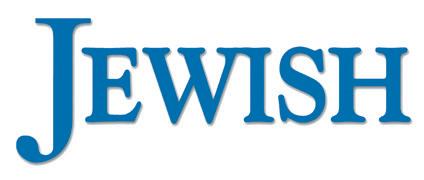
1. Select greeting size. Check your selection: A, B, or C.
Chanukah to all our friends
is a 1-column-inch size. (Does not include graphic) Only $15
This is a 2-column-inch size. (Includes graphic) Only $30
This is a 3-column-inch size. (Includes graphic) Only $45

2. Select your message. Check off your selection.
□ Happy Chanukah
□ A sweet and joyous Chanukah
□ Happy Chanukah to our friends
□ Our warmest wishes for a joyous Chanukah
□ Warm Chanukah greetings from
□ Best wishes to all for a Happy Chanukah
□ Wishing all of Dayton Happy Chanukah

3. Print the name(s) as you’d like them to appear.
4.
5. Make sure your selections are checked off above. Send this form with your check, payable to The Dayton Jewish Observer, 525 Versailles Drive, Dayton, OH 45459. Deadline is Wednesday, Nov. 6, 2024.
By Talia Doninger Special To The Observer
Lolita set the literary world of 1955 on fire. Controversial, provocative, and polarizing, Vladimir Nabokov’s novel was rejected by multiple publishers before George Weidenfeld took a chance on it.
Critics called it obscene, bookstores hesitated to display it. But for Weidenfeld, it was the kind of work that defined his audacious career.
He saw the tension between public outrage and literary merit as the heart of publishing’s true purpose. Lolita was more than just a bestseller — it marked a pivotal moment in the legacy of George Weidenfeld.

Thomas Harding explores Weidenfeld’s world in The Maverick, unearthing layers of the Austrian Jewish refugee in London who stood at the crossroads of art, politics, and history.
Harding’s first glimpse into Weidenfeld’s life came through books Weidenfeld had published including I Am Malala, Double Helix, The White House Years by Henry Kissinger, and The Hedgehog and the Fox
“George revolutionized the art of publishing in the 20th century, although his work wasn’t just about the books, but his life as a Jewish refugee and the lens through which he saw the world,” Harding told The Observer via a Zoom interview from his home in Florence, Italy.
Weidenfeld’s journey began in Vienna in the 1930s. As a Jewish teenager, he fled to London on the eve of World War II. He carried with him the trauma of persecution and a thirst to advocate for those who were persecuted.
“He had a sense of anxiety and fear, a trepidation of the world suddenly changing," Harding said. "It was an inspiration for his work.”
Harding portrays scenes of Weiden-
The JCC Cultural Arts & Book Series presents author Thomas Harding via Zoom, 7 p.m., Thursday, Nov. 14. Register for the free program at jewishdayton.org/event.

feld as he balanced the world of publishing with the shadows of his past. He hosted raucous gatherings with intellectuals; but beneath the laughter and debates was his sense of loneliness.
“Through his networking, through his parties, it was an antidote to his core sense of isolation,” Harding said.
The gatherings were a way to assert himself in a world where, no matter how successful he was, Weidenfeld was still seen as an outsider partly because of his Jewish identity.
Weidenfeld’s rise to prominence in the publishing world didn’t shield him from antisemitic tropes and accusations. Harding said the criticism often centered on perceptions of Weidenfeld as disloyal or unreliable.
“Despite his extraordinary success, the antisemitism never went away, even to the very end,” Harding said. “He was covered extensively by the media partly because he was being laughed at.”
Harding added that though Weidenfeld fought for authors’ rights to express themselves, he was hesitant to publish works that criticized or clashed with his personal beliefs.
His commitment to philanthropy, particularly toward Israel, was one of his enduring legacies. He was deeply connected to his Jewish heritage and the survival of the Jewish people.
Weidenfeld channeled much of his wealth and influence to support Israel’s development. He cofounded the Weidenfeld Fund for Israel Studies at Oxford University and contributed to numerous initiatives to promote peace and foster understanding in the region.
“His Judaism was important to him,” Harding said. “Israel was at the center of his world.”

Tourism to Poland keeps Jewish culture on life support in places where it once thrived. There are countless heritage packages available, bundled with cemetery tours and day visits to death camps.
In lieu of 3 million Jews murdered there, Poland takes its place on the map as a mass grave and, increasingly in films, a transformative locale for those hoping to eat, pray, cry their way into a sense of self-understanding.
Jesse Eisenberg’s A Real Pain, is an odd-couple road movie, with cousins Dave (Eisenberg) and Benji (Kieran Culkin) tracking down their late grandmother’s childhood home.
As the two shuttle from monuments to lichen-covered headstones and the blue patina of gas chambers at Majdanek, we learn that Benji is masking a deep pain.
He’s affronted by their tour guide’s “constant barrage of factoids,” which lose sight of the victims’ humanity.
Eisenberg’s film hides a critique of the ghastlier parts of the heritage tour industry. In probing these parts of the past, the focus shifts from the dead to the obligations of the living. The task is not to engage with history, but to find a personal context.
This doesn’t cheapen the Holocaust, but suggests no other narrative is available to so many of us. Just as no film can ever do justice to the horrors, no life can equal all those lost. And yet we keep returning to the scene of the crime, hoping for some answer.
A Real Pain opens at The Neon, 130 E. Fifth St., Dayton, Thursday, Nov. 14 and runs for two weeks, with additional holdovers based on its performance. For more information, go to neonmovies.com.

Henrietta "Henny" Torf Lubow, 95, of Columbus, passed away on Oct. 19. Henny was born on March 9, 1929 into a large extended family in Cincinnati. She attended the University of Cincinnati and received a bachelor’s degree in education from The Ohio State University in 1952 and a master’s degree in education from Wright State University in 1971. Henny began her career teaching elementary school and remedial reading in the Dayton public school system and at Hillel Academy of Dayton, before pursuing her calling teaching developmentally disabled students and unwed mothers, helping them learn life skills and finding job placements for them. Henny enjoyed reading and loved her memoirs-writing and play-reading groups, investment club, and exercise group. She held leadership positions in the Dayton Chapter of Hadassah and the Dayton View Neighborhood Council. Henny and Howard had a large and close group of Dayton friends who celebrated birthdays and holidays together. For more than 30 years, Howard, Henny and their friends built a sukkah together in their backyard for their annual Sukkot party. Henny loved corresponding with her friends and her many cousins. She took a special interest in writing poems and limericks for birthday and anniversary celebrations and loved collecting jokes. In recent years, she lived at Creekside at the Village in Columbus. Henny used to joke that she wanted her parting words to be “Don’t put wet dishes on top of dry dishes in the dish rack.” Henny was preceded in death by her parents, Elias and Edith Linder Torf; her sister, Judith Torf Strauss; her brother, Morton Aaron Torf; and her husband, Howard Lubow. She is survived by her daughters, Cheryl and Judy of Columbus; her sons, Jeff (Anna) of Dayton and Barry (Susan) of Columbus; grandchildren Becca, Elias, Jenna, and Eden Lubow, and niece Miriam Strauss. Interment was at Riverview Cemetery. Contributions in her memory may be made to the Temple Israel (Dayton) Buy-a-Book Fund, Hadassah, the Bexley Public Library, or another nonprofit organization of your choice.
Aleksandar Svager, age 93, died of natural causes on Oct. 3 in Oakwood. He was preceded in death by his parents, Greta Dohan Svager and Oskar T. Svager, and his wife, Thyrsa Frazier Svager. He is survived by relatives in San Paolo, Brazil and many friends in the Wilberforce Xenia community. Aleksandar was born in what was then Sarajevo, Yugoslavia on Aug. 10, 1931. In 1941, Aleksandar and
his parents escaped from Nazioccupied Yugoslavia, only hours before they were to be transported to Auschwitz but were instead placed in a prisoner of war camp in Italy. Innately Aleksandar knew the meaning of the Lovelace line: “Stone walls do not a prison make nor iron bars, a cage.” He enjoyed running the streets surrounding the Italian prison camps and made friends of bakers and other shopkeepers. They were charmed by his intelligent conversation and straightforward demeanor. They engaged Aleksandar to be their money changer. His earnest willingness to do the job carefully, brought their appreciation and trust. Moreover, his being a high spirited 11-year-old avoided the attention of the police. The shopkeepers rewarded him with coins and roasted chicken and goose, which he took to his parents. Throughout his life, he demonstrated an appreciation of money for showing generosity and kindness. When at last the war was over, the family returned to Yugoslavia, where he completed high school-level studies. Thereafter, he attended the Nuclear Institute of Zagreb where he completed undergraduate courses and remained for postgraduate studies. After two years at the Nuclear Institute, the University of Sarajevo awarded him a graduate teaching fellowship which allowed him to teach while completing his postgraduate program. But Yugoslavia, then under Communist control, was a very different place. Aleksandar found the Yugoslavian government control burdensome and wanted to go to the United States. However, the governing body was particularly determined to keep its top scientists and technologists from leaving its confines. For this reason, Aleksandar was fearful of seeking asylum in the United States, which was likely to place his family and former professors in danger. As a relative safe alternative, he applied for and received a student visa through the Institute for International Education which allowed him to study in a foreign
university. Thus in 1960, Aleksandar became a teaching assistant in the Texas Christian University physics department, where he received one more degree, a master of arts; moreover he met wonderful colleagues and made many friends. When the Yugoslavian government asked him to return, he refused but chose to seek faculty positions in the United States. By an unexpected instance of timing, a Master of Arts in Computer Science was the most valuable credential for seeking a college professor’s position. Many, many universities were beginning to establish their first computer science departments. Aleksandar chose Central State University because it offered him the greatest autonomy and allowed him to select his own staff. In 1964, Aleksandar became professor of physics and chairperson of Central State University’s first Computer Science Department and there he met Thyrsa Frazier, chairperson of the Mathematics Department. The couple worked together to encourage African American students to major in computer science. On commencement day in 1968, Aleksandar Svager married Thyrsa Frazier. Internment was at Massie Cemetery in Cedarville Township.

Loretta Jaffe Weber, March 7, 1934 — Oct. 7, 2024. Loretta Jaffe Weber of Dayton died peacefully at the age of 90. Born in Evanston, Ill. to Ethel and Lawson Jaffe, she devoted her life to her family and instilled in them a lifelong love for learning and the arts. She studied at The Ohio State University, where she met her husband, Fred Weber, to whom she was married to for 30 years. She was crowned May Queen her freshman year, the first Jewish woman to have that honor. After college, she worked as a model before starting a family. She was generous with her time and energy and was most
proud of her family and volunteer activities such as chairing the Art Ball at the Dayton Art Institute. She had an unfailing eye for fashion and an unwavering love for jewelry which led her to start Charade, a costume jewelry business. She was no stranger to the jewelry business. Her father, Lawson Jaffe, whom she adored, was a gem salesman who bought Mayor’s Jewelers in Dayton and which her former husband eventually led and grew into Weber Jewelers. Her love of fashion led her to write newspaper reviews of major costume exhibitions for the Dayton Daily News including Chanel (Metropolitan); Fashion Show: Paris Collections (Boston Museum of Fine Arts); and Reel to Reel: The Hollywood Designer After Film (Columbus Museum). Loretta was a striking beauty, often mistaken for Elizabeth Taylor. She was sharp, perceptive, and well read. Never shy about sharing her opinions, including on the radio, she always let you know what she thought and what was in her heart. She knew the latest books, movies, plays, and world events and was engaging, witty, and fun to be around. She loved the Oscars, New York City, and most of all, her children. She was predeceased by her former husband, Fred Weber and brother, Louis Jaffe. Loretta is survived by her three children, Rick (Susan) Weber, Lisa (Jeff) Greenberg, and Stephanie (Andrew Blazar) Weber; five grandchildren, Alison (Ryan) MacIntyre, Zachary (Amanda Triplett) Greenberg, Laura (Jordan Chmara) Greenberg, Mack (Emily) Weber, and Nell Weber; along with three great-grandchildren, Emma, Teddy, and Lilli. She is also survived by her stepbrother, Larry Jaffe, and stepsister, Linda Peterson. Interment was at Riverview Cemetery. If so inclined, donations may be made to the Dayton Art Institute.



Now more than ever — we're here for
If you value what we do, help us continue.
Only The Dayton Jewish Observer brings you coverage of how the Israel-Hamas war and the global surge in antisemitism impact our Jewish community here in the Miami Valley.
We are your Jewish newspaper, covering the local stories most important to you.
Ad sales and Jewish Federation support only cover a portion of our expenses to bring you The Observer. Our printing costs have increased and postage expenses have more than doubled over the last two years. Your help will ensure the depth of our coverage.
Please consider a Voluntary Subscription to The Observer.
One-year subscription to The Observer and acknowledgment in The Observer ($18 value)
One-year subscription, acknowledgment in The Observer and one free three-column holiday greeting ($54 value) $18
One-year subscription, acknowledgment in The Observer and one free one-column holiday greeting ($30 value)
Renewing Guardian Angel
Zerla Stayman
New Guardian Angels
Marc & Cindy Fox
Renewing Angels
Sylvia Blum & Family
Lynn Foster
Bella Freeman
Sydney & Lois Gross
Kristen Mitchem
Sharyn Reger
New Angel
Paula Schwartz Weiss
Double Chai
Michael & Judy Feinstein
Gary Gams
Barbara Gronefeld
Barbara Hollander
Dr. Bradley Jacobs & Dr.
Cassandra Millings-Jacobs
Sondra Kulback
Mark Mitzman
Linda Novak
Roden Family
Susan & Marvin Schear
Katie Simpkins
Susan & Martin Toher
Ronald Wasserstrom
Rosemary Abban
Michael Bailes
Nicki Caplan
Cheryl & Rick Carne
J.K. Elbaum
Steven & Sandra Forsythe
Charlotte Golden
Motyka Johnson
Marshall & Susan Kapp
Cynthia King
Joan Korber
Ellen Lauber
Hannah & Stephen Levinson
Nicholas Schmall
Dan & Kim Shaffer
Harriet Shpiner
Dr. Warren Wingate Gary Zaremsky Current Champion + Andrea Scher Rabiner
Current Champions
Elaine & John Gaglione
William Marwil
Howard Michaels
Milton Nathan
Current Guardian Angels
Buck Run Commercial Doors & Hardware
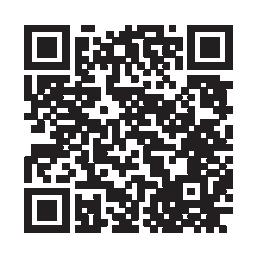
Dr. Douglas & Mrs. Bethany
Einstein
Tara & Adam Feiner
Bruce & Debbie Feldman
Marni Flagel
Steven & Penney Fraim
Stephen Goldberg
Debby & Bob Goldenberg
Carol Graff
Susan & Jonas Gruenberg
Robert & Vicky Heuman
Marilyn & Larry Klaben
Laurence A. Lasky
Laurie & Eddie Leventhal
Judy Lipton
Drs. Perry & Renata Lubens
Marvin & Susan Mason
Gary Pacernick
Bernard Rabinowitz
Brenda Rinzler
Susan & Nathaniel Ritter
Lee and Patti Schear
Greg Schreck
Ms. Louise Stein
Steve & Shara Taylor
Temple Anshe Emeth
Current Angels
Jeffrey Abrahams
Elaine Abramson
Beth Adelman
Steve Adler
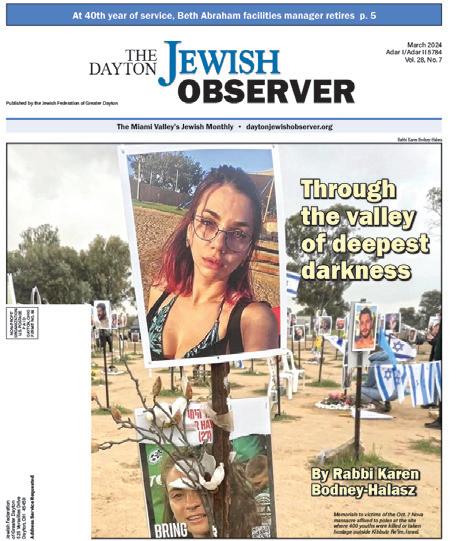
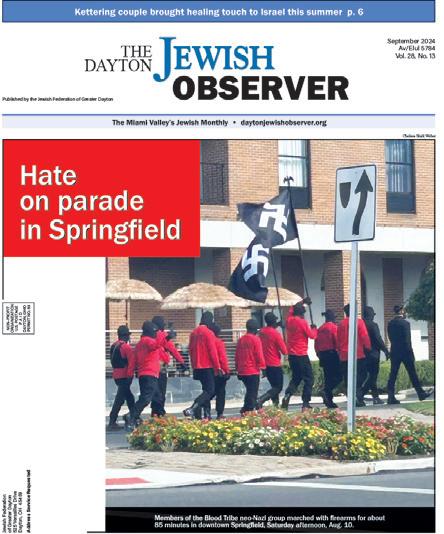
One-year subscription, one-year acknowledgment in The Observer and three free three-column holiday greetings ($126 value)
All listed in Guardian Angel, plus the gratitude of knowing how much you help support Jewish journalism in the Miami Valley. ($126 value)
Karen & Steve Arkin
Dr. Joshua & Julie Atkin
K.W. Baker & Assoc., LLC
The Barrett Family
Skip & Ann Becker
Michael & Amy Bloom
Frieda Blum
Lisa & Kenneth Blum
James & Margaret Brooks
Judith & Steven Carne
Don Charles
Roger Chudde
Natalie R. Cohn
Scot & Linda Denmark
Susan Dlott
Howard & Sue Ducker
Stanley Frankowitz
Jeff Froelich, Cindy Pretekin & Families
Dr. Felix Garfunkel
Mrs. Jack Goldberg
Kim & Shelley Goldenberg
Lynn & David Goldenberg
Michael Goldstein
Martin Gottlieb
Judi & George Grampp
Art & Joan Greenfield
Harold & Melissa Guadalupe
Sharon & Izzy Guterman
Dr. & Mrs. Stephen Harlan
Ralph E. & Sylvia S. Heyman
Martin & Joan Holzinger
Linda & Steve Horenstein
Joan Isaacson
Rachel Jacobs
Michael Jaffe
David & Susan Joffe
Joseph & Marsha Johnston
Linda Ohlmann Kahn &
Dennis Kahn
Jeffrey Kantor
Susan & Stanley Katz
Harriet Klass
Beth Kolotkin
Cantor & Mrs. Jerome Kopmar
Ellen & Michael Leffak
Cory & Sharon Lemmon
Edye Leuin
Todd & Gabriele Leventhal
Iris Levi
Meredith Moss Levinson
Levy Family
Norm & Kay Lewis
Ellie Lewis
Beverly A. Louis
Donald & Carole Marger
Helen Markman
Scott & Brenda Meadow
Suzi & Jeff Mikutis
Irvin & Gayle Moscowitz
William L. Moser
Bobbie & Jack Myers
James Nathanson
Myrna Nelson
In honor of Natalie M. Davis RN NICU Neonatal, Cedar Sinai Hospital, L.A., grandaughter of Martin Nizny
Ann Paddock
Karyn & Robert Posner
Cherie Rosenstein
Alice & Burt Saidel
Barbara Sanderow
Diane Schultz
Felice Shane
Katherine Sher & Jared Serota
Michael Silverman
Diane Lieberman Slovin
Susan Spiegel & Lisa Hanauer
Jeff & Cathy Startzman
Myron Stayman
Maggie Stein
Marc & Maureen Sternberg
Rina Thau & Col. Jeffrey Thau, USAF, (Ret.)
Bob & Suzanne Thum
Rex & Louise Tincher
Mr. Lawrence Wagenfeld
The Waldman Family
Ms. Judith Weber
Donald & Caryl Weckstein
